Click through the PLOS taxonomy to find articles in your field.
For more information about PLOS Subject Areas, click here .
Loading metrics
Open Access
Peer-reviewed
Research Article

Impact of the Sustainable Development Goals on the academic research agenda. A scientometric analysis
Roles Conceptualization, Investigation, Supervision, Validation, Writing – original draft, Writing – review & editing
Affiliation Research Institute on Policies for Social Transformation, Universidad Loyola Andalucía, Córdoba, Spain
Roles Conceptualization, Investigation, Methodology, Supervision, Validation, Writing – original draft, Writing – review & editing
Affiliation Public Policy Observatory, Universidad Autónoma de Chile, Santiago, Chile
* E-mail: [email protected]
Affiliation Department of Finance and Accounting, Universidad Loyola Andalucía, Córdoba, Spain
Roles Conceptualization, Investigation, Supervision, Writing – original draft, Writing – review & editing
Affiliation Social Matters Research Group, Universidad Loyola Andalucía, Córdoba, Spain
- Antonio Sianes,
- Alejandro Vega-Muñoz,
- Pilar Tirado-Valencia,
- Antonio Ariza-Montes

- Published: March 17, 2022
- https://doi.org/10.1371/journal.pone.0265409
- Peer Review
- Reader Comments
Today, global challenges such as poverty, inequality, and sustainability are at the core of the academic debate. This centrality has only increased since the transition from the Millennium Development Goals (MDGs) to the Sustainable Development Goals (SDGs), whose scope is to shift the world on to a path of resilience focused on promoting sustainable development. The main purpose of this paper is to develop a critical yet comprehensive scientometric analysis of the global academic production on the SDGs, from its approval in 2015 to 2020, conducted using Web of Science (WoS) database. Despite it being a relatively short period of time, scholars have published more than five thousand research papers in the matter, mainly in the fields of green and sustainable sciences. The attained results show how prolific authors and schools of knowledge are emerging, as key topics such as climate change, health and the burden diseases, or the global governance of these issues. However, deeper analyses also show how research gaps exist, persist and, in some cases, are widening. Greater understanding of this body of research is needed, to further strengthen evidence-based policies able to support the implementation of the 2030 Agenda and the achievement of the SDGs.
Citation: Sianes A, Vega-Muñoz A, Tirado-Valencia P, Ariza-Montes A (2022) Impact of the Sustainable Development Goals on the academic research agenda. A scientometric analysis. PLoS ONE 17(3): e0265409. https://doi.org/10.1371/journal.pone.0265409
Editor: Stefano Ghinoi, University of Greenwich, UNITED KINGDOM
Received: September 10, 2021; Accepted: March 1, 2022; Published: March 17, 2022
Copyright: © 2022 Sianes et al. This is an open access article distributed under the terms of the Creative Commons Attribution License , which permits unrestricted use, distribution, and reproduction in any medium, provided the original author and source are credited.
Data Availability: All relevant data are within the manuscript and its Supporting Information files.
Funding: The funders had no role in study design, data collection and analysis, decision to publish, or preparation of the manuscript.
Competing interests: The authors have declared that no competing interests exist.
1. Introduction
1.1. from the millennium agenda to the 2030 agenda and the sustainable development goals (sdgs).
To track the origins of the 2030 Agenda for Sustainable Development, we must recall the Millennium Agenda, which was the first global plan focused on fighting poverty and its more extreme consequences [ 1 ]. Approved in 2000, its guiding principle was that northern countries should contribute to the development of southern states via Official Development Assistance (ODA) flows. The commitment was to reach 0.7% of donors’ gross domestic product [ 2 ] to reduce poverty by half by 2015. The relative failure to reach this goal and the consolidation of a discourse of segregation between northern and southern countries [ 3 ] opened the door to strong criticism of the Millennium Agenda. Therefore, as 2015 approached, there were widespread calls for a profound reformulation of the system [ 4 ].
The world in 2015 was very different from that in the early 2000s. Globalization had reached every corner of the world, generating development convergence between countries but increasing inequalities within countries [ 5 , 6 ]. Increasing interest in the environmental crisis and other global challenges, such as the relocation of work and migration flows, consolidated a new approach to development and the need of a more encompassed agenda [ 7 ]. This new agenda was conceived after an integrating process that involved representatives from governments, cooperation agencies, nongovernmental organisations, global business, and academia. The willingness of the 2030 Agenda to ‘leave no one behind’ relies on this unprecedented global commitment by the international community [ 8 ].
As a result of this process, in 2015, the United Nations General Assembly formally adopted the document “Transforming our World: the 2030 Agenda for Sustainable Development” [ 9 ], later known as the 2030 Agenda. This new global agenda is an all-comprising strategy that seeks to inform and orient public policies and private interventions in an extensive range of fields, from climate change to smart cities and from labour markets to birth mortality, among many others.
The declared scope of the Agenda is to shift the world on to a path of resilience focused on promoting sustainable development. To do so, the 2030 Agenda operates under the guidance of five principles, formally known as the ‘5 Ps’: people, planet, prosperity, peace, and partnerships [ 10 ]. With these pivotal concepts in mind, the Agenda has established a total of 17 Sustainable Development Goals (SDGs) and 169 specific targets to be pursued in a 15-year period, which reflects the scale and profound ambition of this new Agenda.
The SDGs do not only address what rich countries should do for the poor but rather what all countries should do together for the global well-being of this and future generations [ 4 ]. Thus, the SDGs cover a much broader range of issues than their predecessors, the Millennium Development Goals [ 11 ], and are intended to be universal on the guidance towards a new paradigm of sustainable development that the international community has been demanding since the 1992 Earth Summit [ 7 , 12 , 13 ].
Despite this potential, some criticise their vagueness, weakness, and unambitious character. Fukuda-Parr [ 14 ], see weaknesses on the simplicity of the SDGs, which can lead to a very narrow conception that reduces the integral concept of development. The issue of measurement is also problematic; for some researchers, the quantification of objectives not only reduces their complexity, but leads to them being carried out without considering the interdependencies between the objectives [ 12 , 13 ]. Other authors have identified difficulties associated with specifying some of the less visible, intangible aspects of their qualitative nature such as inclusive development and green growth [ 14 , 15 ]. Finally, Stafford-Smith et al. [ 16 ] state that their successful implementation also requires paying greater attention to the links across sectors, across societal actors and between and among low-, medium-, and high-income countries.
Despite these criticisms, the SDGs have undoubtedly become the framework for what the Brundtland report defined as our common future. Unlike conventional development agendas that focus on a restricted set of dimensions, the SDGs provide a holistic and multidimensional view of development [ 17 ]. In this line, Le Blanc [ 12 ] concludes that the SDGs constitute a system with a global perspective; because they consider the synergies and trade-offs between the different issues involved in sustainable development, and favour comprehensive thinking and policies.
1.2. Towards a categorization of the SDGs
There is an underlying lack of unanimity in the interpretation of the SDGs, which has given rise to alternative approaches that allow categorizing the issues involved in their achievement without losing sight of the integral vision of sustainable development [ 15 , 18 – 23 ]. However, such categorization of the SDGs makes it possible to approach them in a more holistic and integrated way, focusing on the issues that underlie sustainable development and on trying to elucidate their connections.
Among the many systematization proposals, and following the contributions of Hajer et al. [ 19 ], four connected perspectives can strengthen the universal relevance of the SDGs: a) ‘planetary boundaries’ that emphasize the urgency of addressing environmental concerns and calling on governments to take responsibility for global public goods; b) ‘The safe and just operating space’ to highlight the interconnectedness of social and environmental issues and their consequences for the redistribution of wealth and human well-being; c) ‘The energetic society’ that avoids the plundering of energy resources; and d) ‘green competition’ to stimulate innovation and new business practices that limit the consumption of resources.
Planetary boundaries demand international policies that coordinate efforts to avoid overexploitation of the planet [ 24 ]. Issues such as land degradation, deforestation, biodiversity loss and natural resource overexploitation exacerbate poverty and deepen inequalities [ 21 , 25 – 27 ]. These problems are further compounded by the increasing impacts of climate change with clear ramifications for natural systems and societies around the globe [ 21 , 28 ].
A safe and just operating space implies social inclusivity that ensures equity principles for sharing opportunities for development [ 15 , 29 ]. Furthermore, it requires providing equitable access to effective and high-quality preventive and curative care that reduces global health inequalities [ 30 , 31 ] and promotes human well-being. Studies such as that of Kruk et al. [ 32 ] analyse the reforms needed in health systems to reduce mortality and the systemic changes necessary for high-quality care.
An energetic society demands global, regional and local production and consumption patterns as demands for energy and natural resources continue to increase, providing challenges and opportunities for poverty reduction, economic development, sustainability and social cohesion [ 21 ].
Finally, green competition establishes limits to the consumption of resources, engaging both consumers and companies [ 22 ] and redefining the relationship between firms and their suppliers in the supply chain [ 33 ]. These limits must also be introduced into life in cities, fostering a new urban agenda [ 34 , 35 ]. Poor access to opportunities and services offered by urban centres (a function of distance, transport infrastructure and spatial distribution) is a major barrier to improved livelihoods and overall development [ 36 ].
The diversification of development issues has opened the door to a wide range of new realities that must be studied under the guiding principles of the SDGs, which involve scholars from all disciplines. As Saric et al. [ 37 ] claimed, a shift in academic research is needed to contribute to the achievement of the 2030 Agenda. The identification of critical pathways to success based on sound research is needed to inform a whole new set of policies and interventions aimed at rendering the SDGs both possible and feasible [ 38 ].
1.3. The relevance and impact of the SDGs on academic research
In the barely five years since their approval, the SDGs have proven the ability to mobilize the scientific community and offer an opportunity for researchers to bring interdisciplinary knowledge to facilitate the successful implementation of the 2030 Agenda [ 21 ]. The holistic vision of development considered in the SDGs has impacted very diverse fields of knowledge, such as land degradation processes [ 25 , 26 ], health [ 39 ], energy [ 40 ] and tourism [ 41 ], as well as a priori further disciplines such as earth observation [ 42 ] and neurosurgery [ 43 ]. However, more importantly, the inevitable interdependencies, conflicts and linkages between the different SDGs have also emerged in the analyses, highlighting ideas such as the need for systemic thinking that considers the spatial and temporal connectivity of the SDGs, which calls for multidisciplinary knowledge. According to Le Blanc [ 12 ], the identification of the systemic links between the objectives can be a valuable undertaking for the scientific community in the coming years and sustainable development.
Following this line, several scientific studies have tried to model the relationships between the SDGs in an attempt to clarify the synergies between the objectives, demonstrating their holistic nature [ 12 , 17 , 20 , 44 , 45 ]. This knowledge of interdependencies can bring out difficulties and risks, or conversely the drivers, in the implementation of the SDGs, which will facilitate their achievement [ 22 ]. In addition, it will allow proposing more transformative strategies to implement the SDG agenda, since it favours an overall vision that is opposed to the false illusion that global problems can be approached in isolation [ 19 ].
The lack of prioritisation of the SDGs has been one of the issues raised regarding their weakness, which should also be addressed by academics. For example, Gupta and Vegelin [ 15 ] analyse the dangers of inclusive development prioritising economic issues, relegating social or ecological inclusivity to the background, or the relational aspects of inclusivity that guarantee the existence of laws, policies and global rules that favour equal opportunities. Holden et al. [ 46 ] suggest that this prioritisation should be established according to three moral criteria: the satisfaction of human needs, social equity and respect for environmental limits. These principles must be based on ethical values that, according to Burford et al. [ 47 ], constitute the missing pillar of sustainability. In this way, the ethical imperatives of the SDGs and the values implicit in the discourses on sustainable development open up new possibilities for transdisciplinary research in the social sciences [ 46 , 47 ].
Research on SDG indicators has also been relevant in the academic world, as they offer an opportunity to replace conventional progress metrics such as gross domestic product (GDP) with other metrics more consistent with the current paradigm of development and social welfare that takes into account such aspects as gender equality, urban resilience and governance [ 20 , 48 ].
The study of the role of certain development agents, including companies, universities or supranational organisations, also opens up new areas of investigation for researchers. Some studies have shown the enthusiastic acceptance of the SDGs by companies [ 22 , 49 ]. For Bebbington and Unerman [ 50 ], the study of the role of organisations in achieving the SDGs should be centred around three issues: challenging definitions of entity boundaries to understand their full impacts, introducing new conceptual frameworks for analysis of the context within which organisations operate and re-examining the conceptual basis of justice, responsibility and accountability. On the other hand, the academic community has recognized that knowledge and education are two basic pillars for the transition towards sustainable development, so it may also be relevant to study the responsibility of higher education in achieving the SDGs [ 47 , 50 ]. Institutional sustainability and governance processes are issues that should be addressed in greater depth through research [ 47 ].
Finally, some authors have highlighted the role of information technologies (ICT) in achieving the SDGs [ 23 ] and their role in addressing inequality or vulnerability to processes such as financial exclusion [ 51 ], which opens up new avenues for research.
Despite this huge impact of the SDGs on academic research, to the best of our knowledge, an overall analysis of such an impact to understand its profoundness and capillarity is missing in the literature. To date, reviews have focused on the implementation of specific SDGs [ 52 – 61 ], on specific topics and collectives [ 62 – 70 ], on traditional fields of knowledge, now reconsidered in light of the SDGs [ 71 – 73 ] and on contributions from specific regions or countries [ 74 , 75 ]. By relying on scientometric techniques and data mining analyses, this paper collects and analyses the more than 5,000 papers published on the SDGs to pursue this challenging goal and fill this knowledge gap.
This article aims to provide a critical review of the scientific research on SDGs, a concept that has emerged based on multiple streams of thinking and has begun to be consolidated as of 2015. As such, global references on this topic are identified and highlighted to manage pre-existing knowledge to understand relationships among researchers and with SDG dimensions to enhance the presently dispersed understanding of this subject and its areas of further development. A scientometric meta-analysis of publications on SDGs is conducted to achieve this objective. Mainstream journals from the Web of Science (WoS) are used to identify current topics, the most involved journals, the most prolific authors, and the thematic areas around which the current academic SDG debate revolves.
Once Section 1 has revised on the related literature to accomplish the main objective, Section 2 presents the research methodology. Section 3 presents the main results obtained, and Section 4 critically discusses these results. The conclusion and the main limitations of the study are presented in Section 5.
2. Materials and methods
In methodological terms, this research applies scientometrics as a meta-analytical means to study the evolution of documented scientific knowledge on the Sustainable Development Goals [ 76 – 81 ], taking as a secondary source of information academic contributions (i.e. articles, reviews, editorials, etc.) indexed in the Web of Science (WoS). To ensure that only peer-reviewed contributions authored by individual researchers are retrieved and that such publications have a worldwide prestige assessment, all of them should be published on journals indexed in the Journal Citation Report (JCR), either as part of the Sciences Citation Index Expanded or the Social Sciences Citation Index [ 82 – 84 ].
Following the recommendations of previous studies [ 85 ], it was decided to apply the next search vector from 2015 to 2020 to achieve the research objectives TS = (Sustainable NEAR/0 Development NEAR/0 Goals), which allows the extraction of data with 67 fields for each article registered in WoS.
As the first step, to give meaning to subsequent analyses, we tested the presence of exponential growth in the production of documented knowledge that allows a continuous renewal of knowledge [ 76 , 86 ].
As a second action, given the recent nature of the subject studied, it is of interest to map the playing field [ 87 ] using VOSviewer software version 1.6.16 [ 88 ], to know which topics are most addressed in the matter of SDGs. This analysis seeks an approach, both through the concentration of Keyword Plus® [ 89 ] and by analysing the references used as input in the production of knowledge, which can be treated as cocitations, coupling-citations and cross-citations [ 90 ], using the h-index, in citation terms, as discriminant criteria in the selection of articles [ 91 – 93 ]. This methodology will allow us to establish production, impact and relationship metrics [ 80 , 85 , 87 , 94 , 95 ].
Finally, it is of interest to explore the possible concentrations that may arise. Using Lotka’s Law, we estimated the possible prolific authors and their areas of work in SDGs, and using Bradford’s Law, we conducted a search of a possible adjustment to a geometric series of the concentration zones of journals and therefore a potential nucleus where a profuse discussion on SDGs is taking place [ 96 – 100 ].
3.1. Configuration of the academic production on SDGs
The results present a total of 5,281 articles for a period of six years (2015–2020) in 1,135 journals, with over 60% of these documents published in the last two years. The total of articles is distributed among authors affiliated with 7,418 organisations from 181 countries/regions, giving thematic coverage to 183 categories of the Journal Citation Report-Web of Science (JCR-WoS). Table 1 shows the distribution among the top ten JCR-WoS categories, highlighting the prevalence of journals indexed in green and environmental sciences and, thus, in the Science Index-Expanded.
- PPT PowerPoint slide
- PNG larger image
- TIFF original image
https://doi.org/10.1371/journal.pone.0265409.t001
3.2. Existence of research critical mass
Fig 1 shows the regression model for the period 2015–2020, the last year with complete records consolidated in the Web of Science. The results obtained show significant growth in the number of studies on SDGs, with an R 2 adjustment greater than 96%. The exponential nature of the model shows that a ‘critical mass’ is consolidating around the research on this topic, as proposed by the Law of Exponential Growth of Science over Time [ 76 ], which in some way gives meaning to this research and to obtaining derived results.
https://doi.org/10.1371/journal.pone.0265409.g001
3.3. Establishment of concentrations
In accordance with Lotka’s Law, 22,336 authors were identified of the 5,281 articles under study. From this author set, 136 (≈sqrt (22,336)) are considered prolific authors with a contribution to nine or more works. However, a second restriction, even more demanding, is to identify those prolific authors who are also prolific in contemporary terms. Although SDG studies are recent, the growth production rates are extremely high. As previously shown, for the period 2015–2020, 64% of the publications are concentrated between 2019–2020. Based on this second restriction, for 3,400 articles of the 5,281 articles published in 2019 and 2020, and a total of 15,120 authors, only eight prolific authors manage to sustain a publication number that equals or exceeds nine articles. These authors are listed and characterized in Table 2 .
https://doi.org/10.1371/journal.pone.0265409.t002
The analysis shown in Table 2 highlights the University of Washington’s participation in health issues with Murray and Hay (coauthors of eight articles in the period 2019–2020), who are also important in the area of health for the prolific authors Yaya and Bhutta. The environmental SDGs mark a strong presence with Abhilash, Leal-Filho and Kalin. The affiliation of Abhilsash (Banaras Hindu University) is novel, as it is not part of the classic world core in knowledge production that is largely concentrated in the United States and Europe. It is worth noting that other prolific authors belong to nonmainstream knowledge production world areas, such as Russia or Pakistan. Professor Alola also deserves mention; not only is he the only contemporary prolific author producing in the area of economics, but he is also producing knowledge in Turkey.
In the same way, at the journal level, the potential establishment of concentration areas and determination of a deep discussion nucleus are analysed using Bradford’s law.
With a percentage error of 0.6%, between the total journal number and the total journal number estimated by the Bradford series, the database shows a core of 18 journals (2%) where one in three articles published are concentrated (see Table 3 ).
https://doi.org/10.1371/journal.pone.0265409.t003
Regarding the number of contributions by journal, Sustainability has the largest number of studies on SDGs, in which 689 (13%) of the 5,281 articles studied are concentrated. The Journal of Cleaner Production, indexed to WoS categories related to Environmental SDGs, is the second most prominent journal, with 2.7% participation of the articles (147). Both journals are followed by the multidisciplinary journal Plos One, with 2.2% of the total dataset. In terms of impact factor, the 60 points of the health journal The Lancet are superlative in the whole, which in the other cases ranges between 2.000 and 7.246. As shown in Table 4 , we have developed a “Prominence ranking” by weighting article production by impact factor. This metric shows The Lancet, with only 40 articles on SDGs, as the most relevant journal, followed by Sustainability, which becomes relevant due to the high number of publications (689) despite an impact factor of 2.576. These journals are followed by the Journal of Cleaner Production with 147 articles and an impact factor of 7.246.
https://doi.org/10.1371/journal.pone.0265409.t004
3.4. Thematic coverage
Concerning the thematic coverage, Fig 2A and 2B show a diversity of 7,003 Keyword Plus® (KWP), consistently connected to a total of 7,141 KWP assigned by Clarivate as metadata to the set of 5,281 articles studied, which presents a strong concentration in a small number of terms (red colour in the heat map generated with VOSviewer version 1.6.16).
a) Keywords Plus® heatmap and b) heat map zoom to highlight the highest concentration words, data source WoS, 2020.
https://doi.org/10.1371/journal.pone.0265409.g002
Based on this result, a concentration sphere with 85 KWP (= sqrt (7,141)) is established according to Zipf’s Law, which is presented in 50 or more articles out of the total of 5,281. Moreover, a central concentration sphere of 9 KWPs (= sqrt (85)) can be found, with keywords present in a range of 178 to 346 articles out of a total of 5,281. These nine pivotal keywords are all connected in terms of co-occurrence (associated by Clarivate two or more to the same article) and within papers with an average number of citations in WoS that vary from 9.27 to 16.69, as shown in Table 5 . The nine most prominent key words in relation to the study of the SDGs are health, climate change, management, impact, challenges, governance, systems, policy and framework. These terms already suggest some of the themes around which the debate and research in this area revolves.
https://doi.org/10.1371/journal.pone.0265409.t005
The prominence of these keywords is obtained by combining the level of occurrence and average citations (see Table 5 ): on the one hand, the occurrence or number of articles with which the KWP is associated (e.g., Management, 346) and, on the other hand, the average citations presented by the articles associated with these words (e.g., Framework. 9.27). The final score (prominence) mixes both concepts, given the product of the occurrences and the average citations of each KWP in proportion to the mean values (e.g., (330 * 16.69)/(246 * 11.96) = 1.9).
3.5. Relations within the academic contributions
The coupling-citation analysis using VOSviewer identifies the 5,281 articles under study, of which only those found in the h-index as a whole have been considered (the h-index in the database is 81, as there are 81 articles cited 81 or more times). The bibliographic coupling analysis found consistent connections in only 73 of these articles, gathered in seven clusters. Such clusters and unconnected articles are represented in Fig 3 .
Data source WoS. 2020.
https://doi.org/10.1371/journal.pone.0265409.g003
In simple terms, discrimination belonging to one cluster or another depends on the total link number that an article has with the other 80 articles based on the use of the common references. Table 6 specifies the articles belonging to the same publication cluster in relation to Fig 3 .
https://doi.org/10.1371/journal.pone.0265409.t006
Bibliographic coupling analysis can also be used to link the seven clusters that use common references with the field document title (TI), publication name (SO), Keyword Plus-KWP (ID), and research areas (SC). This allows the identification of the main topics of each cluster. As shown in Table 7 , cluster 1 (red) concerns environmental and public affairs; cluster 2 (green), health; cluster 3 (blue), economics; cluster 4 (yellow), health–the burden of disease; cluster 5 (violet), economics–Kuznets curve; cluster 6 (light blue), energy; and cluster 7 (orange), soil—land.
https://doi.org/10.1371/journal.pone.0265409.t007
3.6. Outstanding contributions in the field
The cocitation analysis identified a total of 232,081 references cited by the 5,281 articles under study. It suggests taking as references to review those that present 44 or more occurrences in the database (232,081/5,281). This method results in 34 articles that have been used as main inputs for the scientific production under analysis, cited between 44 and 504 times. A result worth highlighting is that one in three of these documents corresponds to reports from international organisations, such as the United Nations (UN), United Nations Educational, Scientific and Cultural Organization (UNESCO), United Nations International Children’s Emergency Fund (UNICEF), United Nations Fund for Population Activities (UNFPA), World Bank Group (WB) or World Health Organization (WHO). However, it is also possible to identify 21 peer-reviewed scientific contributions. These papers are identified in detail in Table 8 .
https://doi.org/10.1371/journal.pone.0265409.t008
The cocitation analysis yields the degree of relationship of these 21 most cited research articles. It is how such references have been used simultaneously in the same article. Fig 4 displays this information (to help readers, it has also been included in Table 8 , centrality in 21 column).
https://doi.org/10.1371/journal.pone.0265409.g004
According to the relationship level in the most cited article’s selection, the graph ( Fig 3 ) has been clustered in three colours: cluster 1 in red colour groups the highest articles proportion (9) published between 2013 and 2017 in 7 journals. These journals present an impact factor (IF) quite heterogeneous, with values ranging from 2.576 (Sustainability) to 60.39 (Lancet) and indexed in one or more of the following WoS categories: Environmental Sciences (4 journals), Green & Sustainable Science & Technology (4), Environmental Studies (2), Development Studies (1), Medicine, General & Internal (1), Multidisciplinary Sciences (1) and Regional & Urban Planning (1). Three of these articles are cited 130–150 times in the 5,281-article dataset and, at the same time, show a connection centrality of 95–100% with the other 20 articles in the graph, implying a high level of cocitation. The other two clusters group six articles each. The articles of cluster 2 (green colour) are included in a widespread WoS category set: Environmental Sciences (3 journals), Geosciences, Multidisciplinary (2), Ecology (1), Economics (1), Energy & Fuels (1), Environmental Studies (1), Green & Sustainable Science & Technology (1), Materials Science, Multidisciplinary (1), Meteorology & Atmospheric Sciences (1) and Multidisciplinary Sciences (1). The research of Nilsson [ 101 ] was used as a reference in 176 of the 5,281 articles under study, showing a centrality of 100%. This great connection level is also featured in another less cited article [ 17 ] published in Earth’s Future. Finally, cluster 3 (blue) highlights six articles concentrated in three highly cited journals in the WoS categories: Medicine, General & Internal (Lancet) and Multidisciplinary Sciences (Nature and Science), whose IFs range from 41.9 to 60.4. In general, they are articles less connected (cocited) to the set of 21, with centralities of 30–90%. Two of these articles were referenced 140 times or more, although one was published in 2009. Thus, cluster 3 concentrates the references mainly in journals on environmental issues with scientific-technological orientation, as well as classic and high-impact WoS journals (The Lancet, Nature and Science). It is worth noting that some of these top journals may not be listed in Table 4 as they are not included in the Bradford’s nucleus, due to their comparatively low number of contributions published.
Finally, continuing with the thematic study, a cross-citation analysis was developed. Considering only the 81 articles that are part of the h-index of the total set of 5,821 articles under study, the citations that are presented among this elite article set are explored using VosViewer. The cross-citation analysis detects existing relationships between 37 of these 81 articles. Once the directionality of the citations has been analysed, a directed temporal graph is generated using Pajek 64 version 5.09, which is presented in Fig 5 .
https://doi.org/10.1371/journal.pone.0265409.g005
Fig 5 shows how these 37 highly cited articles are related to each other (the number after the name is the publication year), considering that some of these articles are cited as references in other articles in this set. The relationships between the articles in Fig 5 are complex and should be understood under a temporal sequence logic in the citation between two articles. However, some trends can be highlighted.
On the one hand, some contributions stand out for their centrality. Lim et al. [ 102 ] is connected with eight of the 37 articles (21.6%) on citing relationships, as is Fullman et al. [ 27 ], which relates to seven of the 37 articles (18.9%). Both authors researched health issues and are also coauthors of nine articles of the dataset under study. On the other hand, according to the SDG segmentation proposed, Hajer et al. [ 19 ] and Le Blanc [ 12 ] are recognized as seminal articles in social SDGs, since they contribute to the production of other subsequent articles in the set of 37. On the other hand, in health matters, seminal articles are Norheim et al. [ 103 ] and You et al. [ 104 ], two articles published in The Lancet whose citations also contribute to the production of the set introduced as Fig 5 .
4. Discussion
The main purpose of this paper was to develop a critical and comprehensive scientometric analysis of the global academic literature on the SDGs from 2015 to 2020, conducted using the WoS database. The attained results have made it possible to comprehend and communicate to the scientific community the current state of the debate on the SDGs, thus offering insights for future lines of research.
To achieve the objectives, the present study analysed a broad spectrum of 5,281 articles published in 1,135 WoS journals. A first aspect that is striking is the great diversity of topics addressed in these studies, which reflects the multidimensionality of the SDGs. Despite this, more than half of the articles are concentrated in two JCR-WoS categories (Environmental Sciences and Green Sustainable Science Technology), a percentage that exceeds 80% if the categories Environmental Studies and Public Environmental Occupational Health are added. Thus, on the one hand, the size of the body of literature and the broad spectrum of topics more than covers the four perspectives of analysis that are relevant in research on the SDGs, according to Hajer et al. [ 19 ]: planetary boundaries, the safe and just operating space, the energetic society and, last, green competition. However, on the other hand, results also highlight a strong focus on the environmental aspects of the SDGs, which undoubtedly concentrate the most contributions.
The Sustainable Development Goals constitute an area of research that has experienced exponential scientific growth, a tendency already suggested by previous studies [ 81 , 105 ], thus complying with the fundamental principles of Price’s law [ 76 ], which suggests the need for this exponential growth to manifest a continuous renewal of knowledge on the subject under study. The results of this study highlight a significant increase in the number of articles published in the last two years, given that six out of ten articles were published in 2019 or 2020. This tendency confirms how the SDGs continue to arouse great interest in the scientific community and that the debate on the interpretation of sustainable development is still open and very present in academia.
The variety of knowledge areas from which science can approach the SDGs demonstrates the different avenues that exist to address different research questions and their multidimensional nature, as anticipated by Pradhan et al. [ 17 ], a dispersion not far from the traditional fields of knowledge or the conventional dimensions of sustainability. Investigating the reasons for this dispersion in academic research on the SDGs may be a topic of great interest, as anticipated by Burford et al. [ 47 ] and Le Blanc [ 12 ], since understanding the phenomenon of development can only be achieved if the main challenges, both current and future, can be viewed holistically and comprehensively. Along these lines, Imaz and Eizagirre [ 106 ] state that the complexity of the study of the SDGs is undoubtedly marked by their aspiration for universality, by their broad scope encompassing the three basic pillars of sustainable development (economic development, environmental sustainability and social inclusion) and by their desire for integration, motivated by the complexity of the challenges and by the countless interlinkages and interdependencies.
This natural multidimensionality of the SDGs calls for strong cooperation and collaboration between researchers, universities, and countries. In this sense, the scientometric analysis provides good news, as more than a hundred prolific authors (defined as those authors who have published nine or more articles on this topic) have been identified, although these are reduced to eight in contemporary terms (2019 or 2020). This select group of eight authors who lead research and publishing on the SDGs (sometimes with dual or triple affiliations) produce knowledge for universities and research centres both in the global north and the global south: Canada, the U.S., the UK, Germany, Pakistan, Turkey, India, Benin, Russia and Cyprus. The protagonist role played by research institutes in countries in the north has already been acknowledged by previous studies [ 81 , 105 ]. However, the emergence of top scholars producing academic knowledge from developing countries is a more recent tendency, which underscores the pertinence of this analysis.
A closer look at the academic and research curricula of these authors leads to the conclusion that the study of the SDGs does not constitute a final field of research at present. These researchers come from very heterogeneous disciplines, so their approach to the SDGs is also multidisciplinary. To illustrate it with an example, the most cited article by Professor Abhilash of Banaras Hindu University (the most published contemporary prolific author along with Christopher Murray of the University of Washington), with 363 WoS citations in February 2021 alone, is on the use and application of pesticides in India.
In more concrete terms, following Wu et al.’s [ 23 ] classification as a frame of reference, the eight most prolific contemporary authors approach the SDG research problem from two main domains, one of an environmental nature (Abhilash, Leal-Filho, Alola and Kalin) and the other related to health (Murray, Yaya, Bhutta, and Hay). The most common journals where these authors publish on environmental issues are the Journal of Cleaner Production, Higher Education, Water and Science of the Total Environment. Health researchers, on the other hand, tend to publish mainly in the journals of the BMC group, The Lancet and Nature.
This wide diversity of academic fora can be clarified with the application of Bradford’s laws, which identified a core of 18 journals that bring together the debates and academic discussions about the SDGs. It is worth noting that the 18 journals that form the core are distributed in 16 different thematic areas or WoS categories: Development Studies; Ecology; Economics; Education & Educational Research; Engineering, Environmental; Environmental Sciences; Environmental Studies; Green & Sustainable Science & Technology; Hospitality, Leisure, Sport & Tourism; International Relations; Medicine, General & Internal; Multidisciplinary Sciences; Public, Environmental & Occupational Health; Regional & Urban Planning; and Water Resources. On the one hand, this wide dispersion in terms of areas of knowledge suggests that research on the SDGs can be studied from different approaches and disciplines, which opens up a wide range of possibilities for researchers from different branches of scientific knowledge, as well as an opportunity for multidisciplinary collaborations. On the other hand, this heterogeneity might also hinder the communication and dissemination of learning from one field to another. The cross-citation analysis provided in Fig 5 suggests this possibility, as seminal works are related to thematic disciplines more than to the seminal contributions identified in Table 8 .
In this sense, it is interesting to analyse the top-cited articles in the database, as they provide a clear picture of the field of knowledge. One-third of these contributions are provided by international institutions, such as the United Nations Development Program or the World Bank, which provide analyses of a normative nature. This prevalence reflects some weaknesses in the academic basis of the analysis of the SDGs as a whole from a scientific approach, an idea reinforced when the most cited papers are analysed. In fact, only six papers have reached more than 100 citations by contributions included in the database [ 4 , 12 , 24 , 29 , 101 , 107 ]. Not only were these papers largely published before the approval of the SDGs themselves, but half of them are editorial material, inviting contributions but are not evidence-based research papers. Highlighting the nature of the most cited contributions does not diminish their value but does speak to the normative approach that underlies the analysis of the SDGs when addressed not individually but as an overall field of research.
Regarding topics and themes of interest, the scientometric analysis carried out in this research identified a strong concentration around a small number of terms, as represented in a heat map ( Fig 2A and 2B ). All these topics constitute a potential source of inspiration for future research on the subject.
Through an analysis of the main keywords, it can be seen that the studies focused on the traditional areas of health and climate change. However, these keywords also provide new elements for discussion, as they uncover some other areas of study that have been highlighted by the literature. First, the appearance of the term Management as one of the main keywords reveals the importance that researchers give to the role of business in achieving the SDGs, as already suggested by Scheyvens et al. [ 49 ] and Spangenber [ 22 ]. Second, the need to address new governance processes and to seek global solutions, as suggested by authors such as Sachs [ 4 ], underscore the keywords Governance, Policy and Framework, all aspects deemed crucial for the achievement of the SDGs and the 2030 Agenda [ 108 ]. Finally, other keywords such as Impact, Challenges or Systems are a clear example of the complexity and interdependencies that exist in research on the SDGs, considered an essential aspect by Griggs et al. [ 13 ] or Le Blanc [ 12 ]. The attained results highlight some of the connections between different domains of sustainable development by identifying categories and themes that are highly related in the groupings that emerge from the bibliographic coupling analysis.
In general terms, the holistic vision of development embodied by the SDGs has drawn the attention of very different disciplines, fields and areas of scientific knowledge. However, seven major areas of research have emerged: environmental and public affairs, health, economics, health-burden of disease, economics-Kuznets curve, energy and soil-land. These areas are not far removed from the current paradigm of sustainable development, where poverty or inequality are problems that are not exclusive to developing countries [ 5 , 6 ]. Thus, emerging issues that mainly affect first world countries, including urban planning, the impact of activities such as hospitality, sport or tourism, or education for development, are starting to stand out with increasing intensity, which continues to open new avenues for future research.
In short, the results of the scientometric analysis have provided a systematized overview of the research conducted in relation to the SDGs since the approval of the 2030 Agenda. Among other things, the critical analysis has identified the main trends with respect to the number of publications, the most relevant journals, the most prolific authors, institutions and countries, and the collaborative networks between authors and the research areas at the epicentre of the debate on the SDGs. As Olawumi and Chan [ 105 ] already acknowledged, the power research networks applied to the study of the SDGs offer valuable insights and in-depth understandings not only of key scholars and institutions but also about the state of research fields, emerging trends and salient topics.
Consequently, the results of this work contribute to the systematic analysis of scientific research on the SDGs, which can be of great interest for decision-making at the governmental level (e.g., which research to fund and which not to fund), at the corporate level and at the level of research centres, both public and private. Furthermore, the scientometric analysis carried out may provide clues for academics regarding future lines of research and topics of interest where the debate on the SDGs is currently situated.
5. Conclusions, limitations and future research lines
As could not be otherwise, all research in the field of social sciences has a series of limitations that must be clearly and transparently explained. The two most relevant in this study are the following.
First, although the study of the SDGs is a recent object of research, the rate of publication is growing exponentially, such that scientific knowledge is renewed practically in its entirety every two years. The only articles that escape this scientometric obsolescence are those with a high number of citations (h-index). This circumstance generates a temporal limitation in terms of the conclusions obtained in the present investigation, conclusions that should be revised periodically until the growth of publications stabilizes by adopting a logistic form, as recommended by Sun and Lin [ 109 ].
Second, the articles used as the basis for this research were restricted to those published in the JCR-WoS. This decision was made for two main reasons. On the one hand, the limitation was to eliminate potential distortions that could occur as a result of the constant growth of journals that are incorporated annually into other databases, such as ESCI-WoS (Emerging Sources Citation Index). On the other hand, it is impossible to compare impact indices if integrating other databases such as Scopus.
We are aware of these limitations, which for developing a more selective analysis imply assuming the cost of less coverage in exchange.
Regarding future lines of research, the analysis highlights how the study of the SDGs is failing to balance their economic, social and sustainability components, as it still maintains an overall focus on environmental studies.
This suggests the urgency of increasing studies on social SDGs, key topics on the 2030 Agenda including equity (SDGs 4, 5 and 10), social development (SDGs 11 and 16) and governance (SDG 17). These topics are part of the public discourse and currently a source of social pressure in many latitudes, but they are still research areas that are necessary to deepen.
Economic sustainability studies are more present, but highly concentrated, in health economics, as previously acknowledged by Meschede [ 81 ]. Academic research on the SDGs against poverty (SDG 1) and hunger (SDG 2) has not achieved such a prominent place as health. Even less so, the economics of technological development (SDGs 8 and 9), which are recognized as crucial for economic development.
Finally, the environmental SDGs do not achieve a balance among themselves either. Academic research has prioritized action for climate (SDG 13) and industrial and human consumption, mainly water (SDG 6) and energy (SDG 7). New research should be developed in the area of land (SDG 15), life under the sea (SDG 14) and sustainable production (SDG 12).
Supporting information
S1 dataset..
https://doi.org/10.1371/journal.pone.0265409.s001
- View Article
- PubMed/NCBI
- Google Scholar
- 9. Nations United. Transforming our world: the 2030 Agenda for Sustainable Development. New York, NY, USA: United Nations; 2015.
Articles on Sustainable development
Displaying 1 - 20 of 148 articles.

Ghanaians love rice – how smallholder farmers could harvest more of it with the help of machines
Selorm Yaotse Dorvlo , University of Ghana
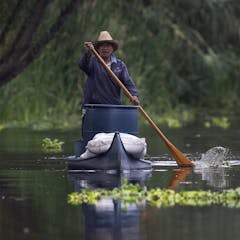
What ancient farmers can really teach us about adapting to climate change – and how political power influences success or failure
Chelsea Fisher , University of South Carolina
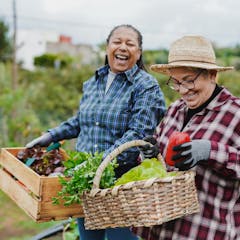
Migrants can be a transformative force for sustainable development
Sonja Fransen , United Nations University ; Neil Adger , University of Exeter ; Ricardo Safra de Campos , University of Exeter , and William C. Clark , Harvard University

Annual rankings don’t always tell us what it’s really like to live in a city
Georges A. Tanguay , Université du Québec à Montréal (UQAM) and Juste Rajaonson , Université du Québec à Montréal (UQAM)

Global university rankings now include social impact: African universities are off to a strong start
Annika Surmeier , University of Cape Town ; Alex Bignotti , University of Pretoria ; Bob Doherty , University of York ; David Littlewood , University of Sheffield ; Diane Holt , University of Leeds ; Phyllis Awor , Makerere University ; Ralph Hamann , University of Cape Town , and Teddy Ossei Kwakye , University of Ghana

Building on the greenbelt is central to solving the housing crisis – just look at how the edges of cities have changed
Cameron McEwan , Northumbria University, Newcastle and Andreas Lechner , Graz University of Technology
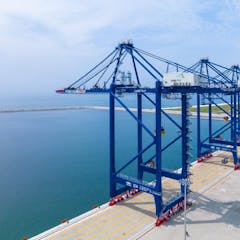
Nigeria’s new blue economy ministry could harness marine resources - moving the focus away from oil
Isa Olalekan Elegbede , Brandenburg University of Technology Cottbus-Senftenberg
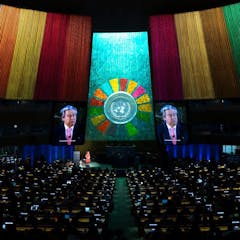
Well behind at halftime: here’s how to get the UN Sustainable Development Goals back on track
Cameron Allen , Monash University and Shirin Malekpour , Monash University

The US committed to meet the UN’s Sustainable Development Goals, but like other countries, it’s struggling to make progress
Scott Schang , Wake Forest University and John Dernbach , Widener University
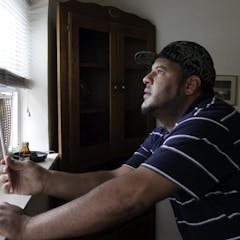
Using green banks to solve America’s affordable housing crisis – and climate change at the same time
Tarun Gopalakrishnan , Tufts University ; Bethany Tietjen , Tufts University , and Seth Owusu-Mante , Tufts University

Is it possible to measure sustainable development?
Patrick Faubert , Université du Québec à Chicoutimi (UQAC) ; Claude Villeneuve , Université du Québec à Chicoutimi (UQAC) , and David Tremblay , Université du Québec à Chicoutimi (UQAC)

Investing in employee ownership could help the Canadian government meet its sustainability goals
Lorin Busaan , University of Victoria and Simon Pek , University of Victoria

Can this former CEO fix the World Bank and solve the world’s climate finance and debt crises as the institution’s next president?
Rachel Kyte , Tufts University

The Rideau Canal Skateway: How can we promote resilience in the face of a changing climate?
Shawn Kenny , Carleton University
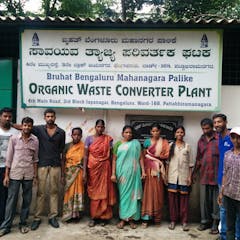
Leveraging digital platforms for public good: Stories of positive impact from India
Suchit Ahuja , Concordia University and Yolande E. Chan , McGill University
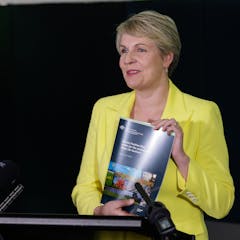
Get the basics right for National Environmental Standards to ensure truly sustainable development
Peter Burnett , Australian National University

A new UN report offers businesses a template for achieving true sustainability
Sofiane Baba , Université de Sherbrooke
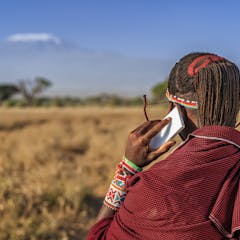
What is Mondiacult? 6 take-aways from the world’s biggest cultural policy gathering
Ribio Nzeza Bunketi Buse , University of Kinshasa

Australia is poised to be a world leader in offshore wind, but any potential risks to marine life remain poorly regulated
Madeline Taylor , Macquarie University
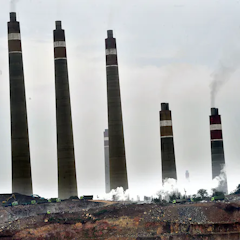
Indonesia’s COVID-19 recovery plan relies on dirty energy, making it harder to hit environmental targets
Denny Gunawan , UNSW Sydney
Related Topics
- Agriculture
- Cities & Policy
- Climate change
- Global perspectives
- Sustainability
- United Nations
- UN sustainable development goals (SDG)
- Urban planning
Top contributors
Distinguished Research Professor and Australian Laureate, James Cook University
Emeritus Professor of Urban & Regional Planning, University of Canberra
Research Fellow, Monash University
Associate Professor in Architectural Engineering, Université catholique de Louvain (UCLouvain)
Professor of Environmental Geography, School of Biological Earth and Environmental Sciences, UNSW Sydney, UNSW Sydney
Senior Lecturer, School of Public Health, The University of Queensland
Research Fellow, Crawford School of Public Policy, Australian National University
Emeritus Professor, Fenner School of Environment & Society, Australian National University
Director, Monash Sustainable Development Institute, Monash University
Assistant Director (International) - Melbourne Centre for Cities, The University of Melbourne
Professor of Sustainability Research, UNSW Sydney
Distinguished Professor of Energy and the Environment, University of Delaware (USA); Honorary Professor, The University of Queensland
Professor of Global Change and Sustainability Research Institute and School of Animal, Plant and Environmental Sciences, University of the Witwatersrand
Clinical Senior Research Associate, MRC Epidemiology Unit, University of Cambridge
Academic Director, School for International Training, The University of Melbourne
- X (Twitter)
- Unfollow topic Follow topic
- From the Directors
- Mission & History
- Advisory Council
- Newsletters & Brochure
- Corporate Responsibility Initiative
- Corporations, Government and Public Policy
- Digital Assets Policy Project
- Education Policy Program
- Financial Sector Program
- GrowthPolicy
- Harvard Electricity Policy Group
- Harvard Environmental Economics Program
- Harvard Kennedy School Healthcare Policy Program
- Harvard Project on Climate Agreements
- Kansai Keizai Doyukai Program
- Regulatory Policy Program
- Rising Chinese Economic Power
Sustainability Science Program
- Seminars & Conferences
- Annual Robert Glauber Lecture
- Working Papers and Reports
- Funding & Prizes
- Other Opportunities

In This Section
- Grants & Fellowships
The Sustainability Science Program is the hub of Harvard's research, teaching, and interventions on the challenges of sustainable development.
Harvard's Sustainability Science Program harnesses the University's strengths to promote the design of institutions, policies, and practices that support sustainable development. The Program addresses the challenge of sustainable development by:
- advancing scientific understanding of human-environment systems;
- improving linkages between research and policy communities; and
- building capacity for linking knowledge with action to promote sustainability.
The Program supports major initiatives in policy-relevant research, faculty research, training of students and fellows, teaching, and outreach.
- Videos showcasing 40 speed talks from Boston-area research at the nexus of food, agriculture, health, environment, and society are now available on the Global Food+ website . Held in February and March, Global Food+ 2021 was a joint webinar series run by researchers at Boston University, Harvard, MIT, and Tufts.
- Videos and meeting materials are now available for the virtual public workshop, "Progress, Challenges, and Opportunities for Sustainability Science" which was convened by The National Academies of Sciences, Engineering, and Medicine November-December 2020 and co-chaired by SSP’s Bill Clark with Prof. Pamela Matson of Stanford University.
- New book Resetting the Table: Straight Talk About the Food We Grow and Eat by Robert Paarlberg (Research Associate '21) noted as New & Noteworthy by New York Times (2/21)
- Clark and Harley on Sustainability science: Toward a synthesis in Annual Review of Environment and Resources (10/20)
- SustainabilityScience.org launch with dynamic Research Guide (9/11)
- Book release by Blal Aden Esmail and Davide Geneletti (Fellow '11), Ecosystem Services for Urban Water Security: Concepts and Applications in Sub-Saharan Africa. SpringerBriefs in Geography (Cham: Springer International Publishing) (5/18)
- Prof. Ray Goldberg discusses the impact of climate change on agriculture throughout history, using food as medicine, the pros/cons of GMOs, and business model innovations some consumer brands are implementing to improve the profitability and financial resilience of their farmers in developing countries on the podcast Agriculture Adapts by ClimateAi: The Father of Agribusiness: 60+ Years of Catalyzing Progress in Global Food Systems (4/23)
- Molly Leavens ( Goldberg Fellow '17; College '20) featured in Crimson's "Fifteen Most Interesting Seniors" [ Profile ] (12/12)
- Seminar hosted on Deliberation Improves Collective Decision-Making: Experimental Evidence from Kenya , Tara Grillos , Assistant Professor of Political Science, Purdue University [ Paper ] (11/14)
- Workshop on Transformation of Coupled Social-ecological and Socio-technical Systems: Defining the Contours of an Integrative Research Agenda cosponsored by the Swiss Federal Institute of Aquatic Science and Technology (EAWAG) and SSP in Kastanienbaum, Switzerland. The event was organized by Christian Binz (EAWAG; Ruffolo Fellow '15 ), Alicia Harley (Harvard/SSP; Ruffolo Fellow), Helene Ahlborg (Univ. Gothenburg) and Manuel Fischer (EAWAG) (5/6-8)
News archive
- Get involved

THE SDGS IN ACTION.
What are the sustainable development goals.
The Sustainable Development Goals (SDGs), also known as the Global Goals, were adopted by the United Nations in 2015 as a universal call to action to end poverty, protect the planet, and ensure that by 2030 all people enjoy peace and prosperity.
The 17 SDGs are integrated—they recognize that action in one area will affect outcomes in others, and that development must balance social, economic and environmental sustainability.
Countries have committed to prioritize progress for those who're furthest behind. The SDGs are designed to end poverty, hunger, AIDS, and discrimination against women and girls.
The creativity, knowhow, technology and financial resources from all of society is necessary to achieve the SDGs in every context.

Eradicating poverty in all its forms remains one of the greatest challenges facing humanity. While the number of people living in extreme poverty dropped by more than half between 1990 and 2015, too many are still struggling for the most basic human needs.
As of 2015, about 736 million people still lived on less than US$1.90 a day; many lack food, clean drinking water and sanitation. Rapid growth in countries such as China and India has lifted millions out of poverty, but progress has been uneven. Women are more likely to be poor than men because they have less paid work, education, and own less property.
Progress has also been limited in other regions, such as South Asia and sub-Saharan Africa, which account for 80 percent of those living in extreme poverty. New threats brought on by climate change, conflict and food insecurity, mean even more work is needed to bring people out of poverty.
The SDGs are a bold commitment to finish what we started, and end poverty in all forms and dimensions by 2030. This involves targeting the most vulnerable, increasing basic resources and services, and supporting communities affected by conflict and climate-related disasters.

736 million people still live in extreme poverty.
10 percent of the world’s population live in extreme poverty, down from 36 percent in 1990.
Some 1.3 billion people live in multidimensional poverty.
Half of all people living in poverty are under 18.
One person in every 10 is extremely poor.
Goal targets
- By 2030, reduce at least by half the proportion of men, women and children of all ages living in poverty in all its dimensions according to national definitions
- Implement nationally appropriate social protection systems and measures for all, including floors, and by 2030 achieve substantial coverage of the poor and the vulnerable
- By 2030, ensure that all men and women, in particular the poor and the vulnerable, have equal rights to economic resources, as well as access to basic services, ownership and control over land and other forms of property, inheritance, natural resources, appropriate new technology and financial services, including microfinance
- By 2030, build the resilience of the poor and those in vulnerable situations and reduce their exposure and vulnerability to climate-related extreme events and other economic, social and environmental shocks and disasters
- Ensure significant mobilization of resources from a variety of sources, including through enhanced development cooperation, in order to provide adequate and predictable means for developing countries, in particular least developed countries, to implement programmes and policies to end poverty in all its dimensions
- Create sound policy frameworks at the national, regional and international levels, based on pro-poor and gender-sensitive development strategies, to support accelerated investment in poverty eradication actions
SDGs in Action
Press releases.
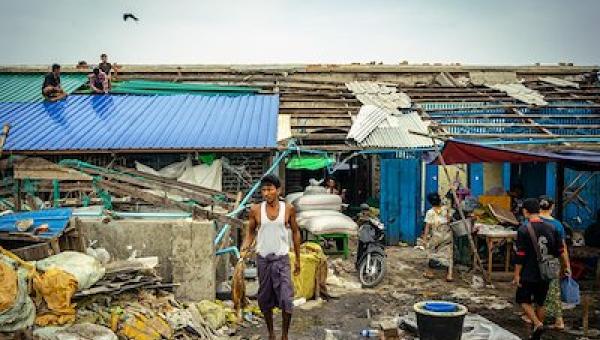
Middle class disappearing and ...
Publications.
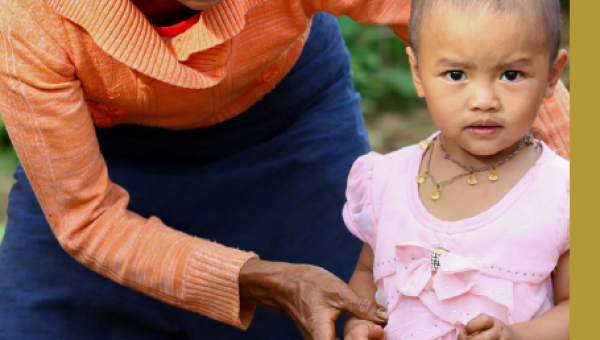
Poverty and the Household Econ...
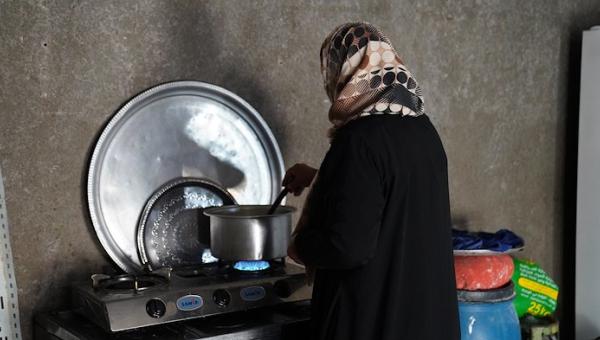
"I'm home, finally."

Waiting for a Saturday that ne...
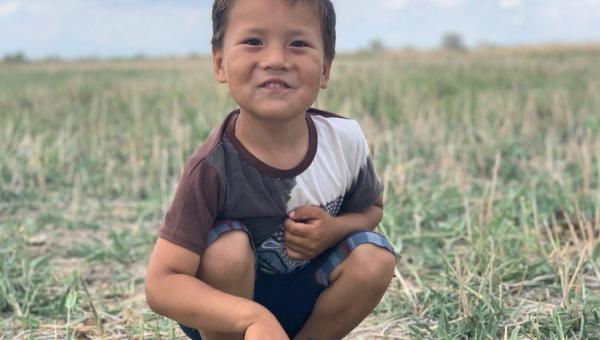
Crowdfunding for development
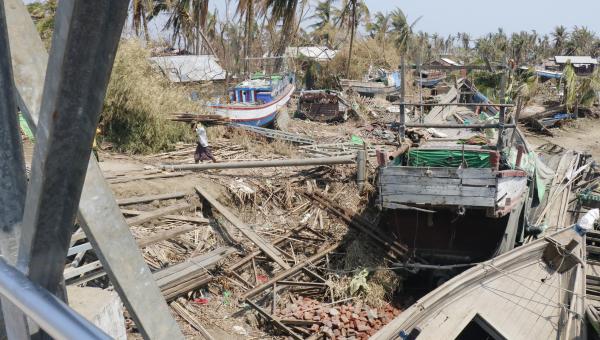
Recovery and hope in Myanmar's...
Zero hunger.

Zero Hunger
The number of undernourished people has dropped by almost half in the past two decades because of rapid economic growth and increased agricultural productivity. Many developing countries that used to suffer from famine and hunger can now meet their nutritional needs. Central and East Asia, Latin America and the Caribbean have all made huge progress in eradicating extreme hunger.
Unfortunately, extreme hunger and malnutrition remain a huge barrier to development in many countries. There are 821 million people estimated to be chronically undernourished as of 2017, often as a direct consequence of environmental degradation, drought and biodiversity loss. Over 90 million children under five are dangerously underweight. Undernourishment and severe food insecurity appear to be increasing in almost all regions of Africa, as well as in South America.
The SDGs aim to end all forms of hunger and malnutrition by 2030, making sure all people–especially children–have sufficient and nutritious food all year. This involves promoting sustainable agricultural, supporting small-scale farmers and equal access to land, technology and markets. It also requires international cooperation to ensure investment in infrastructure and technology to improve agricultural productivity.
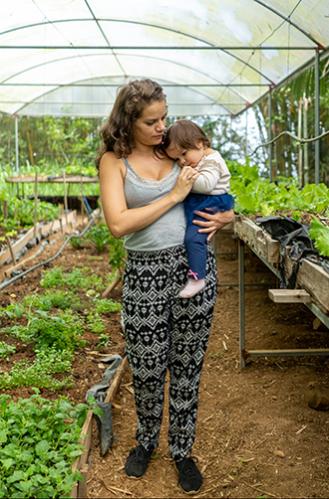
The number of undernourished people reached 821 million in 2017.
In 2017 Asia accounted for nearly two thirds, 63 percent, of the world’s hungry.
Nearly 151 million children under five, 22 percent, were still stunted in 2017.
More than 1 in 8 adults is obese.
1 in 3 women of reproductive age is anemic.
26 percent of workers are employed in agriculture.
- By 2030, end all forms of malnutrition, including achieving, by 2025, the internationally agreed targets on stunting and wasting in children under 5 years of age, and address the nutritional needs of adolescent girls, pregnant and lactating women and older persons
- By 2030, double the agricultural productivity and incomes of small-scale food producers, in particular women, indigenous peoples, family farmers, pastoralists and fishers, including through secure and equal access to land, other productive resources and inputs, knowledge, financial services, markets and opportunities for value addition and non-farm employment
- By 2030, ensure sustainable food production systems and implement resilient agricultural practices that increase productivity and production, that help maintain ecosystems, that strengthen capacity for adaptation to climate change, extreme weather, drought, flooding and other disasters and that progressively improve land and soil quality
- By 2020, maintain the genetic diversity of seeds, cultivated plants and farmed and domesticated animals and their related wild species, including through soundly managed and diversified seed and plant banks at the national, regional and international levels, and promote access to and fair and equitable sharing of benefits arising from the utilization of genetic resources and associated traditional knowledge, as internationally agreed
- Increase investment, including through enhanced international cooperation, in rural infrastructure, agricultural research and extension services, technology development and plant and livestock gene banks in order to enhance agricultural productive capacity in developing countries, in particular least developed countries
- Correct and prevent trade restrictions and distortions in world agricultural markets, including through the parallel elimination of all forms of agricultural export subsidies and all export measures with equivalent effect, in accordance with the mandate of the Doha Development Round
- Adopt measures to ensure the proper functioning of food commodity markets and their derivatives and facilitate timely access to market information, including on food reserves, in order to help limit extreme food price volatility.
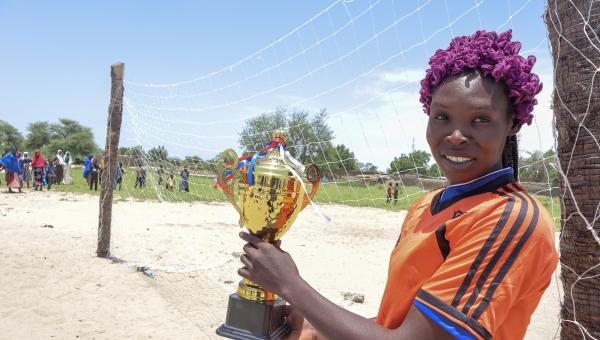
"We felt very welcome and acce...
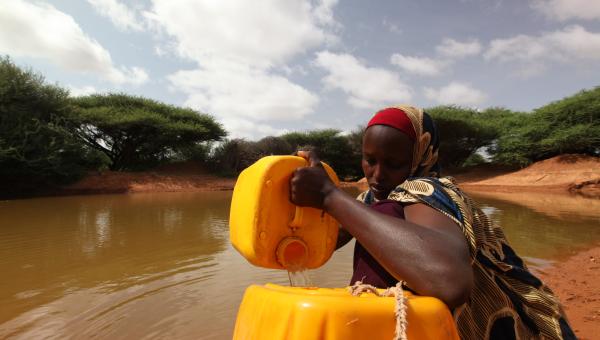
Navigating the crossroads of c...
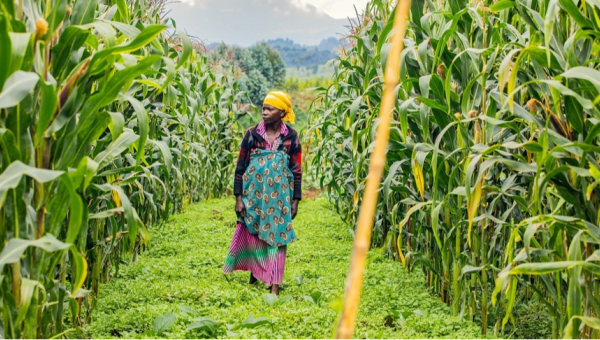
The role of the private sector...
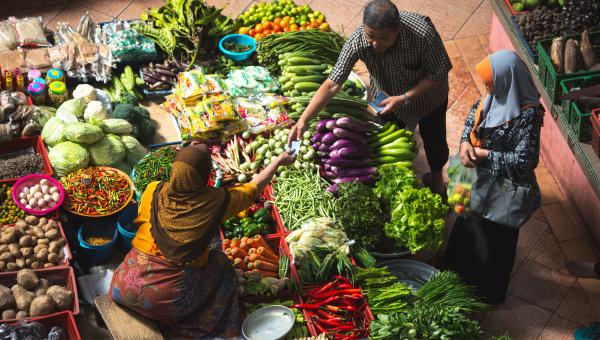
10 ways forward to transform f...
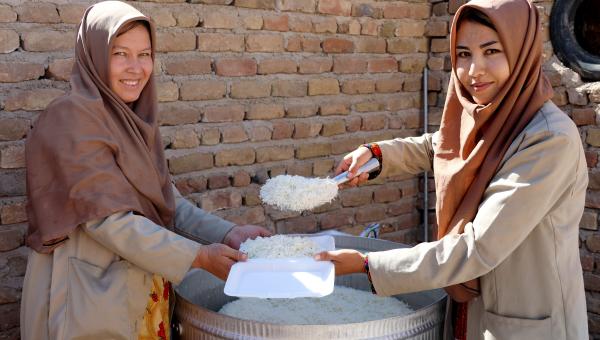
Feeding hope
Good health and well-being.

We have made great progress against several leading causes of death and disease. Life expectancy has increased dramatically; infant and maternal mortality rates have declined, we’ve turned the tide on HIV and malaria deaths have halved.
Good health is essential to sustainable development and the 2030 Agenda reflects the complexity and interconnectedness of the two. It takes into account widening economic and social inequalities, rapid urbanization, threats to the climate and the environment, the continuing burden of HIV and other infectious diseases, and emerging challenges such as noncommunicable diseases. Universal health coverage will be integral to achieving SDG 3, ending poverty and reducing inequalities. Emerging global health priorities not explicitly included in the SDGs, including antimicrobial resistance, also demand action.
But the world is off-track to achieve the health-related SDGs. Progress has been uneven, both between and within countries. There’s a 31-year gap between the countries with the shortest and longest life expectancies. And while some countries have made impressive gains, national averages hide that many are being left behind. Multisectoral, rights-based and gender-sensitive approaches are essential to address inequalities and to build good health for all.
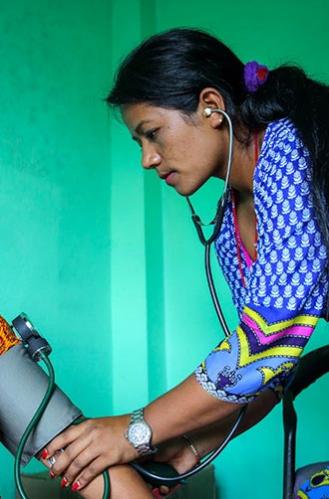
At least 400 million people have no basic healthcare, and 40 percent lack social protection.
More than 1.6 billion people live in fragile settings where protracted crises, combined with weak national capacity to deliver basic health services, present a significant challenge to global health.
By the end of 2017, 21.7 million people living with HIV were receiving antiretroviral therapy. Yet more than 15 million people are still waiting for treatment.
Every 2 seconds someone aged 30 to 70 years dies prematurely from noncommunicable diseases - cardiovascular disease, chronic respiratory disease, diabetes or cancer.
7 million people die every year from exposure to fine particles in polluted air.
More than one of every three women have experienced either physical or sexual violence at some point in their life resulting in both short- and long-term consequences for their physical, mental, and sexual and reproductive health.
- By 2030, reduce the global maternal mortality ratio to less than 70 per 100,000 live births
- By 2030, end preventable deaths of newborns and children under 5 years of age, with all countries aiming to reduce neonatal mortality to at least as low as 12 per 1,000 live births and under-5 mortality to at least as low as 25 per 1,000 live births
- By 2030, end the epidemics of AIDS, tuberculosis, malaria and neglected tropical diseases and combat hepatitis, water-borne diseases and other communicable diseases
- By 2030, reduce by one third premature mortality from non-communicable diseases through prevention and treatment and promote mental health and well-being
- Strengthen the prevention and treatment of substance abuse, including narcotic drug abuse and harmful use of alcohol
- By 2020, halve the number of global deaths and injuries from road traffic accidents
- By 2030, ensure universal access to sexual and reproductive health-care services, including for family planning, information and education, and the integration of reproductive health into national strategies and programmes
- Achieve universal health coverage, including financial risk protection, access to quality essential health-care services and access to safe, effective, quality and affordable essential medicines and vaccines for all
- By 2030, substantially reduce the number of deaths and illnesses from hazardous chemicals and air, water and soil pollution and contamination
- Strengthen the implementation of the World Health Organization Framework Convention on Tobacco Control in all countries, as appropriate
- Support the research and development of vaccines and medicines for the communicable and noncommunicable diseases that primarily affect developing countries, provide access to affordable essential medicines and vaccines, in accordance with the Doha Declaration on the TRIPS Agreement and Public Health, which affirms the right of developing countries to use to the full the provisions in the Agreement on Trade Related Aspects of Intellectual Property Rights regarding flexibilities to protect public health, and, in particular, provide access to medicines for all
- Substantially increase health financing and the recruitment, development, training and retention of the health workforce in developing countries, especially in least developed countries and small island developing States
- Strengthen the capacity of all countries, in particular developing countries, for early warning, risk reduction and management of national and global health risks
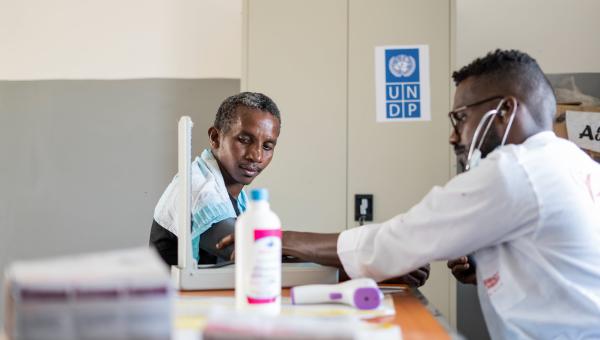
The right environment for heal...

Harnessing artificial intellig...

Why we need greater investment...
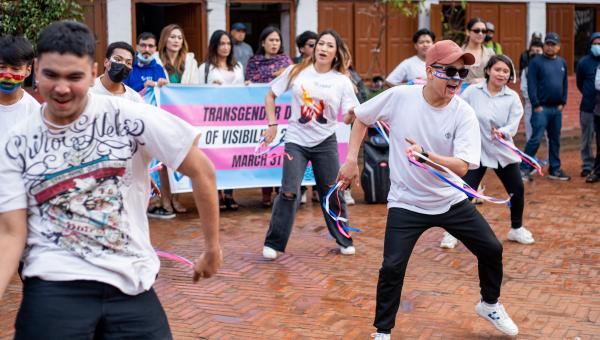
A vote for non-discrimination ...

Conflict and climate change ar...
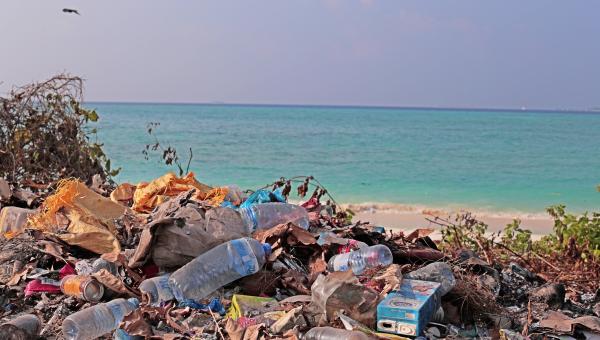
The beginning of the end for p...
Quality education.

Since 2000, there has been enormous progress in achieving the target of universal primary education. The total enrollment rate in developing regions reached 91 percent in 2015, and the worldwide number of children out of school has dropped by almost half. There has also been a dramatic increase in literacy rates, and many more girls are in school than ever before. These are all remarkable successes.
Progress has also been tough in some developing regions due to high levels of poverty, armed conflicts and other emergencies. In Western Asia and North Africa, ongoing armed conflict has seen an increase in the number of children out of school. This is a worrying trend. While Sub-Saharan Africa made the greatest progress in primary school enrollment among all developing regions – from 52 percent in 1990, up to 78 percent in 2012 – large disparities still remain. Children from the poorest households are up to four times more likely to be out of school than those of the richest households. Disparities between rural and urban areas also remain high.
Achieving inclusive and quality education for all reaffirms the belief that education is one of the most powerful and proven vehicles for sustainable development. This goal ensures that all girls and boys complete free primary and secondary schooling by 2030. It also aims to provide equal access to affordable vocational training, to eliminate gender and wealth disparities, and achieve universal access to a quality higher education.

Enrollment in primary education in developing countries has reached 91 percent.
Still, 57 million primary-aged children remain out of school, more than half of them in sub-Saharan Africa.
In developing countries, one in four girls is not in school.
About half of all out-of-school children of primary school age live in conflict-affected areas.
103 million youth worldwide lack basic literacy skills, and more than 60 percent of them are women.
6 out of 10 children and adolescents are not achieving a minimum level of proficiency in reading and math.
- By 2030, ensure that all girls and boys complete free, equitable and quality primary and secondary education leading to relevant and Goal-4 effective learning outcomes
- By 2030, ensure that all girls and boys have access to quality early childhood development, care and preprimary education so that they are ready for primary education
- By 2030, ensure equal access for all women and men to affordable and quality technical, vocational and tertiary education, including university
- By 2030, substantially increase the number of youth and adults who have relevant skills, including technical and vocational skills, for employment, decent jobs and entrepreneurship
- By 2030, eliminate gender disparities in education and ensure equal access to all levels of education and vocational training for the vulnerable, including persons with disabilities, indigenous peoples and children in vulnerable situations
- By 2030, ensure that all youth and a substantial proportion of adults, both men and women, achieve literacy and numeracy
- By 2030, ensure that all learners acquire the knowledge and skills needed to promote sustainable development, including, among others, through education for sustainable development and sustainable lifestyles, human rights, gender equality, promotion of a culture of peace and non-violence, global citizenship and appreciation of cultural diversity and of culture’s contribution to sustainable development
- Build and upgrade education facilities that are child, disability and gender sensitive and provide safe, nonviolent, inclusive and effective learning environments for all
- By 2020, substantially expand globally the number of scholarships available to developing countries, in particular least developed countries, small island developing States and African countries, for enrolment in higher education, including vocational training and information and communications technology, technical, engineering and scientific programmes, in developed countries and other developing countries
- By 2030, substantially increase the supply of qualified teachers, including through international cooperation for teacher training in developing countries, especially least developed countries and small island developing states

Using technology to support ne...
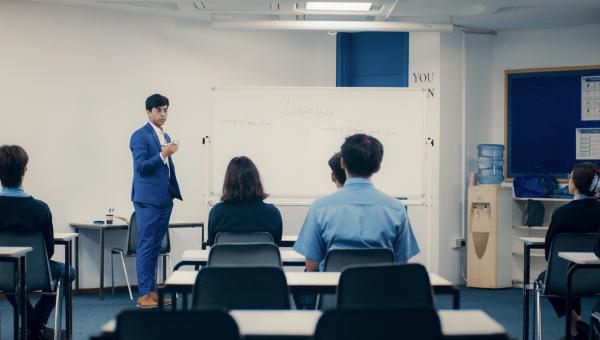
The future of education
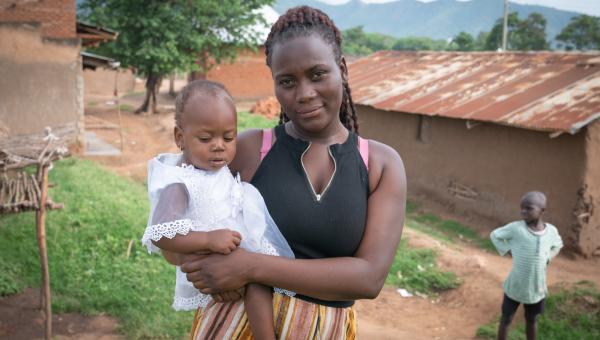
A brighter future: Lillian
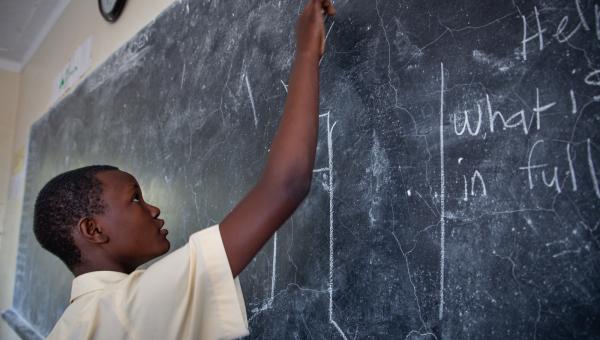
Three reasons climate change e...
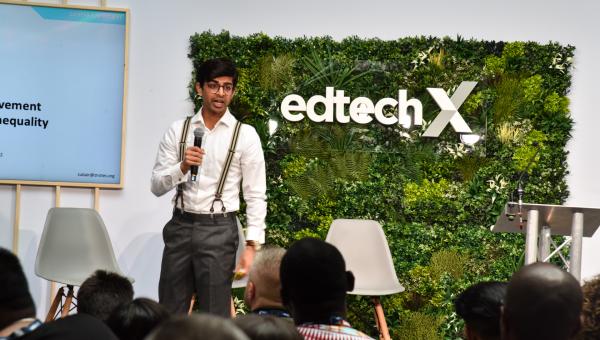
The transformative power of ed...
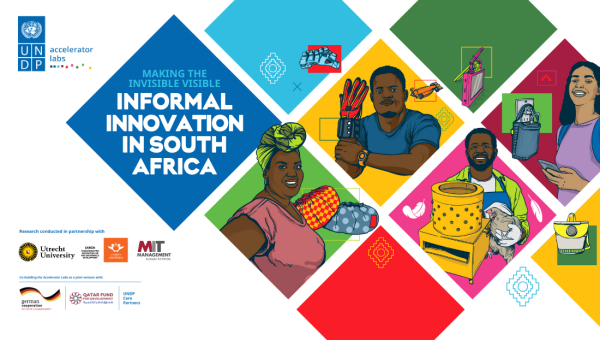
One million informal innovator...
Gender equality.

Gender Equality
Ending all discrimination against women and girls is not only a basic human right, it’s crucial for sustainable future; it’s proven that empowering women and girls helps economic growth and development.
UNDP has made gender equality central to its work and we’ve seen remarkable progress in the past 20 years. There are more girls in school now compared to 15 years ago, and most regions have reached gender parity in primary education.
But although there are more women than ever in the labour market, there are still large inequalities in some regions, with women systematically denied the same work rights as men. Sexual violence and exploitation, the unequal division of unpaid care and domestic work, and discrimination in public office all remain huge barriers. Climate change and disasters continue to have a disproportionate effect on women and children, as do conflict and migration.
It is vital to give women equal rights land and property, sexual and reproductive health, and to technology and the internet. Today there are more women in public office than ever before, but encouraging more women leaders will help achieve greater gender equality.

Women earn only 77 cents for every dollar that men get for the same work.
35 percent of women have experienced physical and/or sexual violence.
Women represent just 13 percent of agricultural landholders.
Almost 750 million women and girls alive today were married before their 18th birthday.
Two thirds of developing countries have achieved gender parity in primary education.
Only 24 percent of national parliamentarians were women as of November 2018, a small increase from 11.3 percent in 1995.
- End all forms of discrimination against all women and girls everywhere
- Eliminate all forms of violence against all women and girls in the public and private spheres, including trafficking and sexual and other types of exploitation
- Eliminate all harmful practices, such as child, early and forced marriage and female genital mutilation
- Recognize and value unpaid care and domestic work through the provision of public services, infrastructure and social protection policies and the promotion of shared responsibility within the household and the family as nationally appropriate
- Ensure women’s full and effective participation and equal opportunities for leadership at all levels of decisionmaking in political, economic and public life
- Ensure universal access to sexual and reproductive health and reproductive rights as agreed in accordance with the Programme of Action of the International Conference on Population and Development and the Beijing Platform for Action and the outcome documents of their review conferences
- Undertake reforms to give women equal rights to economic resources, as well as access to ownership and control over land and other forms of property, financial services, inheritance and natural resources, in accordance with national laws
- Enhance the use of enabling technology, in particular information and communications technology, to promote the empowerment of women
- Adopt and strengthen sound policies and enforceable legislation for the promotion of gender equality and the empowerment of all women and girls at all levels
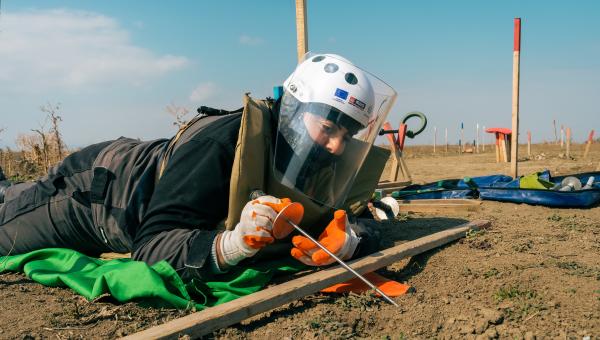
"The work might be hard, but I...
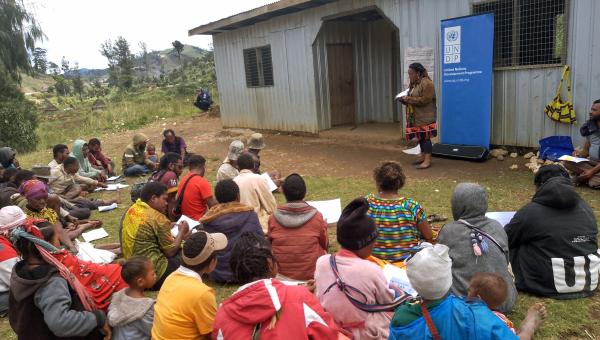
The peacemakers of Papua New G...
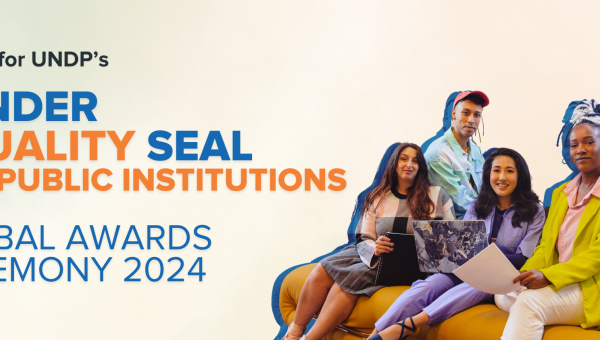
18 Public Institutions receive...
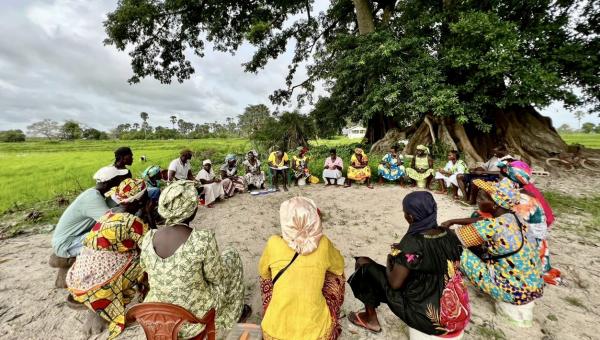
Breaking the cycle of poverty ...
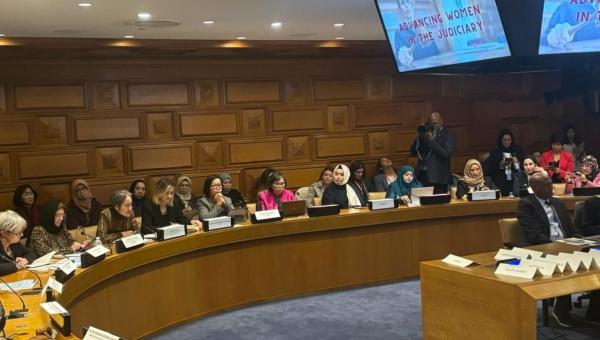
Advancing Women in the Judicia...
Clean water and sanitation.

Water scarcity affects more than 40 percent of people, an alarming figure that is projected to rise as temperatures do. Although 2.1 billion people have improved water sanitation since 1990, dwindling drinking water supplies are affecting every continent.
More and more countries are experiencing water stress, and increasing drought and desertification is already worsening these trends. By 2050, it is projected that at least one in four people will suffer recurring water shortages.
Safe and affordable drinking water for all by 2030 requires we invest in adequate infrastructure, provide sanitation facilities, and encourage hygiene. Protecting and restoring water-related ecosystems is essential.
Ensuring universal safe and affordable drinking water involves reaching over 800 million people who lack basic services and improving accessibility and safety of services for over two billion.
In 2015, 4.5 billion people lacked safely managed sanitation services (with adequately disposed or treated excreta) and 2.3 billion lacked even basic sanitation.
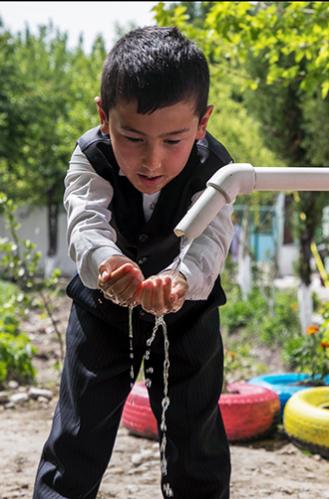
71 percent of the global population, 5.2 billion people, had safely-managed drinking water in 2015, but 844 million people still lacked even basic drinking water.
39 percent of the global population, 2.9 billion people, had safe sanitation in 2015, but 2.3 billion people still lacked basic sanitation. 892 million people practiced open defecation.
80 percent of wastewater goes into waterways without adequate treatment.
Water stress affects more than 2 billion people, with this figure projected to increase.
80 percent of countries have laid the foundations for integrated water resources management.
The world has lost 70 percent of its natural wetlands over the last century.
- By 2030, achieve universal and equitable access to safe and affordable drinking water for all
- By 2030, achieve access to adequate and equitable sanitation and hygiene for all and end open defecation, paying special attention to the needs of women and girls and those in vulnerable situations
- By 2030, improve water quality by reducing pollution, eliminating dumping and minimizing release of hazardous chemicals and materials, halving the proportion of untreated wastewater and substantially increasing recycling and safe reuse globally
- By 2030, substantially increase water-use efficiency across all sectors and ensure sustainable withdrawals and supply of freshwater to address water scarcity and substantially reduce the number of people suffering from water scarcity
- By 2030, implement integrated water resources management at all levels, including through transboundary cooperation as appropriate
- By 2020, protect and restore water-related ecosystems, including mountains, forests, wetlands, rivers, aquifers and lakes
- By 2030, expand international cooperation and capacity-building support to developing countries in water- and sanitation-related activities and programmes, including water harvesting, desalination, water efficiency, wastewater treatment, recycling and reuse technologies
- Support and strengthen the participation of local communities in improving water and sanitation management
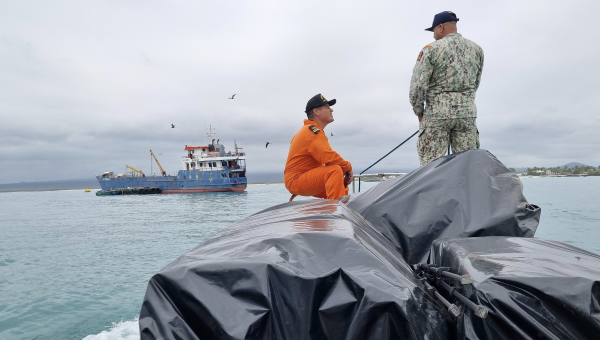
Preserving the laboratory of e...
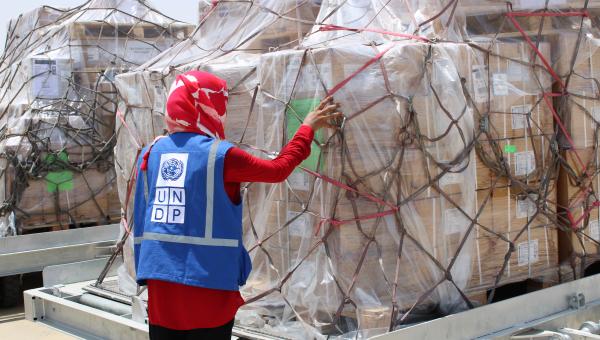
Lives on the line
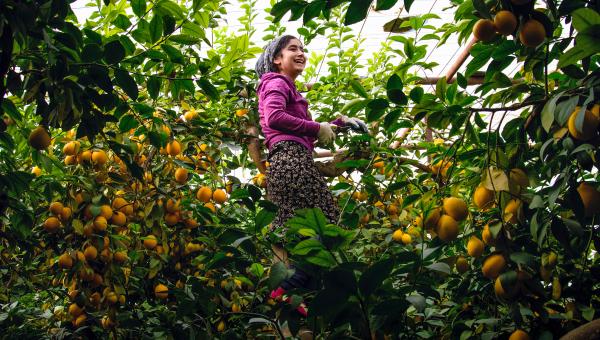
Nature for water, nature for f...
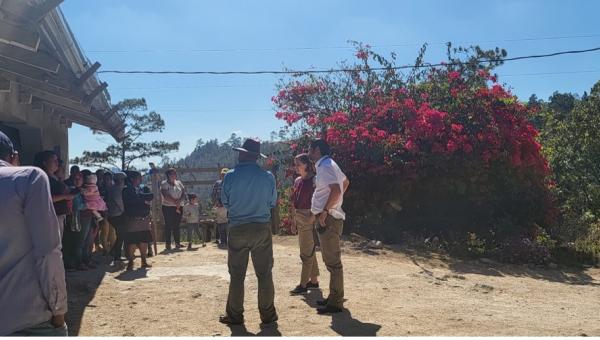
How forests and young people a...
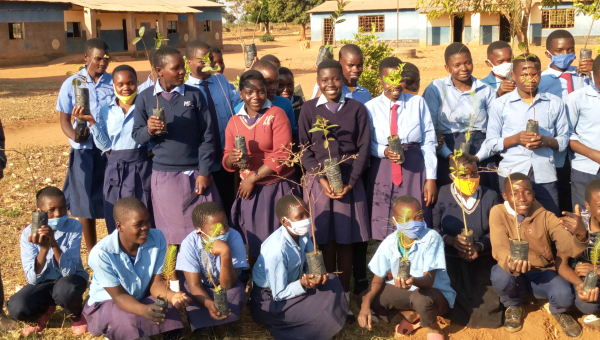

What do the Sustainable Develo...
Affordable and clean energy.

Between 2000 and 2018, the number of people with electricity increased from 78 to 90 percent, and the numbers without electricity dipped to 789 million.
Yet as the population continues to grow, so will the demand for cheap energy, and an economy reliant on fossil fuels is creating drastic changes to our climate.
Investing in solar, wind and thermal power, improving energy productivity, and ensuring energy for all is vital if we are to achieve SDG 7 by 2030.
Expanding infrastructure and upgrading technology to provide clean and more efficient energy in all countries will encourage growth and help the environment.
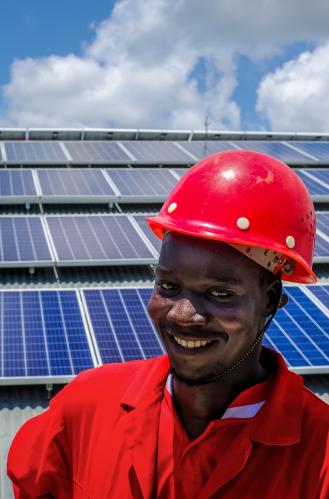
One out of 10 people still lacks electricity, and most live in rural areas of the developing world. More than half are in sub-Saharan Africa.
Energy is by far the main contributor to climate change. It accounts for 73 percent of human-caused greenhouse gases.
Energy efficiency is key; the right efficiency policies could enable the world to achieve more than 40 percent of the emissions cuts needed to reach its climate goals without new technology.
Almost a third of the world’s population—2.8 billion—rely on polluting and unhealthy fuels for cooking.
As of 2017, 17.5 percent of power was generated through renewable sources.
The renewable energy sector employed a record 11.5 million people in 2019. The changes needed in energy production and uses to achieve the Paris Agreement target of limiting the rise in temperature to below 2C can create 18 million jobs.
- By 2030, ensure universal access to affordable, reliable and modern energy services
- By 2030, increase substantially the share of renewable energy in the global energy mix
- By 2030, double the global rate of improvement in energy efficiency
- By 2030, enhance international cooperation to facilitate access to clean energy research and technology, including renewable energy, energy efficiency and advanced and cleaner fossil-fuel technology, and promote investment in energy infrastructure and clean energy technology
- By 2030, expand infrastructure and upgrade technology for supplying modern and sustainable energy services for all in developing countries, in particular least developed countries, small island developing States, and land-locked developing coun
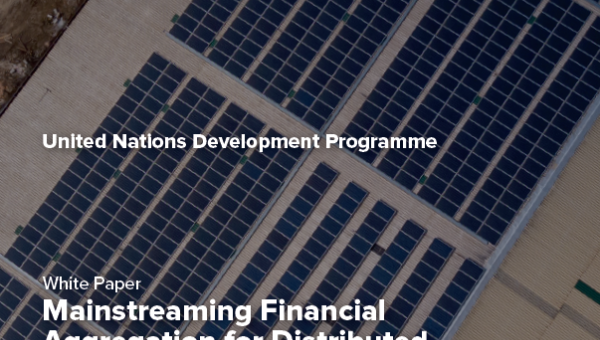
Mainstreaming Financial Aggreg...
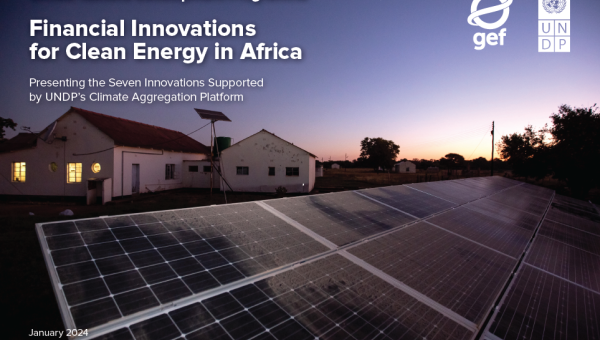
The CAP Financial Innovation C...
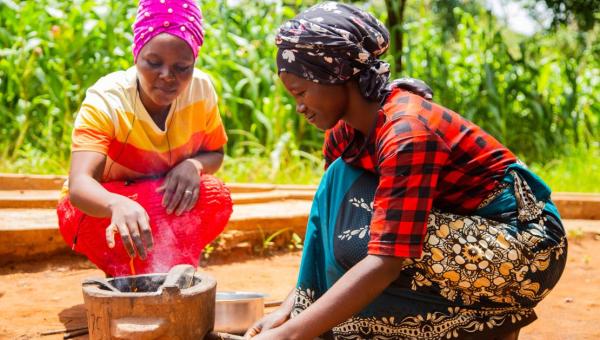
Unlocking barriers to a sustai...

Landlocked Developing Countrie...
Decent work and economic growth.

Over the past 25 years the number of workers living in extreme poverty has declined dramatically, despite the lasting impact of the 2008 economic crisis and global recession. In developing countries, the middle class now makes up more than 34 percent of total employment – a number that has almost tripled between 1991 and 2015.
However, as the global economy continues to recover we are seeing slower growth, widening inequalities, and not enough jobs to keep up with a growing labour force. According to the International Labour Organization, more than 204 million people were unemployed in 2015.
The SDGs promote sustained economic growth, higher levels of productivity and technological innovation. Encouraging entrepreneurship and job creation are key to this, as are effective measures to eradicate forced labour, slavery and human trafficking. With these targets in mind, the goal is to achieve full and productive employment, and decent work, for all women and men by 2030.
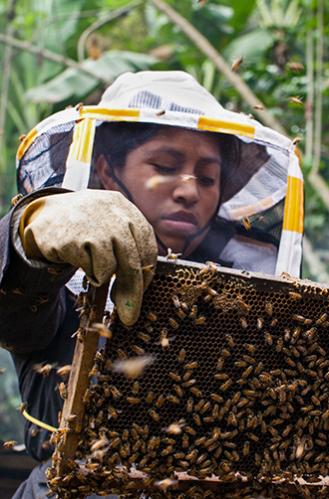
An estimated 172 million people worldwide were without work in 2018 - an unemployment rate of 5 percent.
As a result of an expanding labour force, the number of unemployed is projected to increase by 1 million every year and reach 174 million by 2020.
Some 700 million workers lived in extreme or moderate poverty in 2018, with less than US$3.20 per day.
Women’s participation in the labour force stood at 48 per cent in 2018, compared with 75 percent for men. Around 3 in 5 of the 3.5 billion people in the labour force in 2018 were men.
Overall, 2 billion workers were in informal employment in 2016, accounting for 61 per cent of the world’s workforce.
Many more women than men are underutilized in the labour force—85 million compared to 55 million.
- Sustain per capita economic growth in accordance with national circumstances and, in particular, at least 7 per cent gross domestic product growth per annum in the least developed countries
- Achieve higher levels of economic productivity through diversification, technological upgrading and innovation, including through a focus on high-value added and labour-intensive sectors
- Promote development-oriented policies that support productive activities, decent job creation, entrepreneurship, creativity and innovation, and encourage the formalization and growth of micro-, small- and medium-sized enterprises, including through access to financial services
- Improve progressively, through 2030, global resource efficiency in consumption and production and endeavour to decouple economic growth from environmental degradation, in accordance with the 10-year framework of programmes on sustainable consumption and production, with developed countries taking the lead
- By 2030, achieve full and productive employment and decent work for all women and men, including for young people and persons with disabilities, and equal pay for work of equal value
- By 2020, substantially reduce the proportion of youth not in employment, education or training
- Take immediate and effective measures to eradicate forced labour, end modern slavery and human trafficking and secure the prohibition and elimination of the worst forms of child labour, including recruitment and use of child soldiers, and by 2025 end child labour in all its forms
- Protect labour rights and promote safe and secure working environments for all workers, including migrant workers, in particular women migrants, and those in precarious employment
- By 2030, devise and implement policies to promote sustainable tourism that creates jobs and promotes local culture and products
- Strengthen the capacity of domestic financial institutions to encourage and expand access to banking, insurance and financial services for all
- Increase Aid for Trade support for developing countries, in particular least developed countries, including through the Enhanced Integrated Framework for Trade-Related Technical Assistance to Least Developed Countries
- By 2020, develop and operationalize a global strategy for youth employment and implement the Global Jobs Pact of the International Labour Organization

Saving the Gobi Desert and Mon...
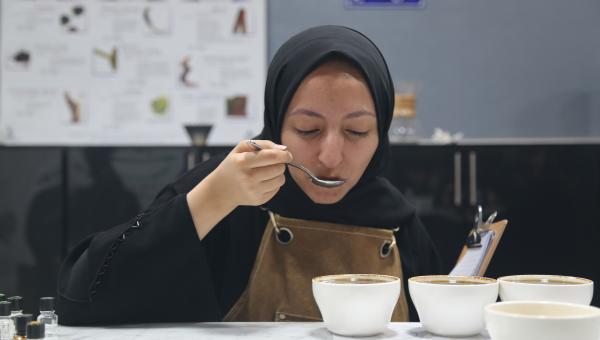
“Yemeni coffee is personal for...
Industry, innovation and infrastructure.

Investment in infrastructure and innovation are crucial drivers of economic growth and development. With over half the world population now living in cities, mass transport and renewable energy are becoming ever more important, as are the growth of new industries and information and communication technologies.
Technological progress is also key to finding lasting solutions to both economic and environmental challenges, such as providing new jobs and promoting energy efficiency. Promoting sustainable industries, and investing in scientific research and innovation, are all important ways to facilitate sustainable development.
More than 4 billion people still do not have access to the Internet, and 90 percent are from the developing world. Bridging this digital divide is crucial to ensure equal access to information and knowledge, as well as foster innovation and entrepreneurship.
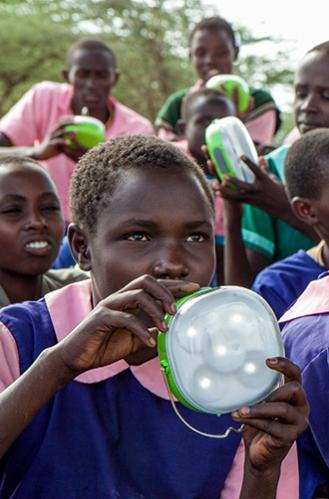
Worldwide, 2.3 billion people lack access to basic sanitation.
In some low-income African countries, infrastructure constraints cut businesses’ productivity by around 40 percent.
2.6 billion people in developing countries do not have access to constant electricity.
More than 4 billion people still do not have access to the Internet; 90 percent of them are in the developing world.
The renewable energy sectors currently employ more than 2.3 million people; the number could reach 20 million by 2030.
In developing countries, barely 30 percent of agricultural products undergo industrial processing, compared to 98 percent high-income countries.
- Develop quality, reliable, sustainable and resilient infrastructure, including regional and transborder infrastructure, to support economic development and human well-being, with a focus on affordable and equitable access for all
- Promote inclusive and sustainable industrialization and, by 2030, significantly raise industry’s share of employment and gross domestic product, in line with national circumstances, and double its share in least developed countries
- Increase the access of small-scale industrial and other enterprises, in particular in developing countries, to financial services, including affordable credit, and their integration into value chains and markets
- By 2030, upgrade infrastructure and retrofit industries to make them sustainable, with increased resource-use efficiency and greater adoption of clean and environmentally sound technologies and industrial processes, with all countries taking action in accordance with their respective capabilities
- Enhance scientific research, upgrade the technological capabilities of industrial sectors in all countries, in particular developing countries, including, by 2030, encouraging innovation and substantially increasing the number of research and development workers per 1 million people and public and private research and development spending
- Facilitate sustainable and resilient infrastructure development in developing countries through enhanced financial, technological and technical support to African countries, least developed countries, landlocked developing countries and small island developing States 18
- Support domestic technology development, research and innovation in developing countries, including by ensuring a conducive policy environment for, inter alia, industrial diversification and value addition to commodities
- Significantly increase access to information and communications technology and strive to provide universal and affordable access to the Internet in least developed countries by 2020
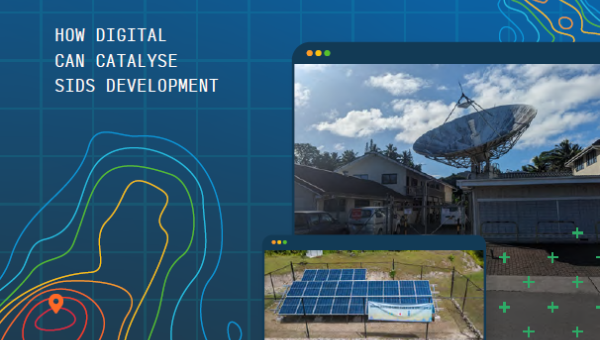
Small Island Digital States: H...
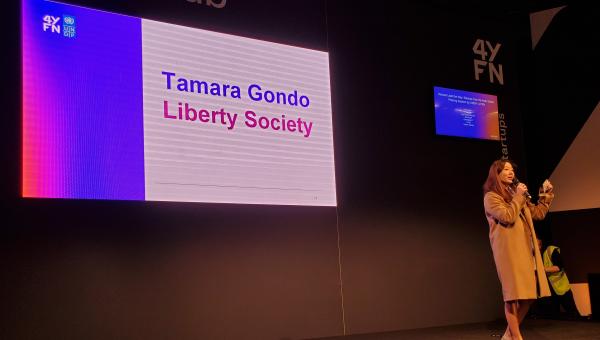
Harnessing technology for posi...

Digital Social Vulnerability I...

Shaping a rights-based approac...
Reduced inequalities.

Income inequality is on the rise—the richest 10 percent have up to 40 percent of global income whereas the poorest 10 percent earn only between 2 to 7 percent. If we take into account population growth inequality in developing countries, inequality has increased by 11 percent.
Income inequality has increased in nearly everywhere in recent decades, but at different speeds. It’s lowest in Europe and highest in the Middle East.
These widening disparities require sound policies to empower lower income earners, and promote economic inclusion of all regardless of sex, race or ethnicity.
Income inequality requires global solutions. This involves improving the regulation and monitoring of financial markets and institutions, encouraging development assistance and foreign direct investment to regions where the need is greatest. Facilitating the safe migration and mobility of people is also key to bridging the widening divide.

In 2016, 22 percent of global income was received by the top 1 percent compared with 10 percent of income for the bottom 50 percent.
In 1980, the top one percent had 16 percent of global income. The bottom 50 percent had 8 percent of income.
Economic inequality is largely driven by the unequal ownership of capital. Since 1980, very large transfers of public to private wealth occurred in nearly all countries. The global wealth share of the top 1 percent was 33 percent in 2016.
Under "business as usual", the top 1 percent global wealth will reach 39 percent by 2050.
Women spend, on average, twice as much time on unpaid housework as men.
Women have as much access to financial services as men in just 60 percent of the countries assessed and to land ownership in just 42 percent of the countries assessed.
- By 2030, progressively achieve and sustain income growth of the bottom 40 per cent of the population at a rate higher than the national average
- By 2030, empower and promote the social, economic and political inclusion of all, irrespective of age, sex, disability, race, ethnicity, origin, religion or economic or other status
- Ensure equal opportunity and reduce inequalities of outcome, including by eliminating discriminatory laws, policies and practices and promoting appropriate legislation, policies and action in this regard
- Adopt policies, especially fiscal, wage and social protection policies, and progressively achieve greater equality
- Improve the regulation and monitoring of global financial markets and institutions and strengthen the implementation of such regulations
- Ensure enhanced representation and voice for developing countries in decision-making in global international economic and financial institutions in order to deliver more effective, credible, accountable and legitimate institutions
- Facilitate orderly, safe, regular and responsible migration and mobility of people, including through the implementation of planned and well-managed migration policies
- Implement the principle of special and differential treatment for developing countries, in particular least developed countries, in accordance with World Trade Organization agreements
- Encourage official development assistance and financial flows, including foreign direct investment, to States where the need is greatest, in particular least developed countries, African countries, small island developing States and landlocked developing countries, in accordance with their national plans and programmes
- By 2030, reduce to less than 3 per cent the transaction costs of migrant remittances and eliminate remittance corridors with costs higher than 5 per cent
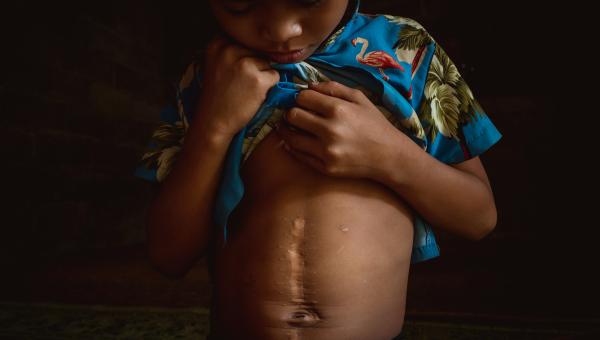
Landmines kill in seconds, the...
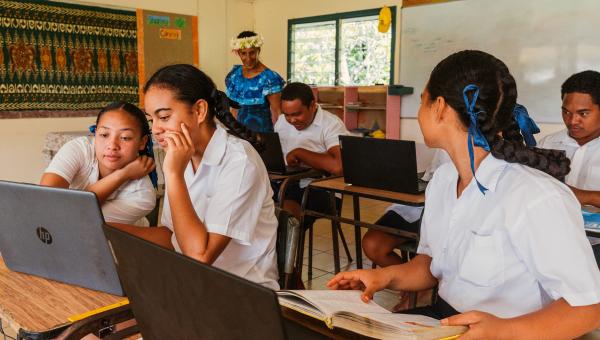
Challenges faced by SIDS canno...
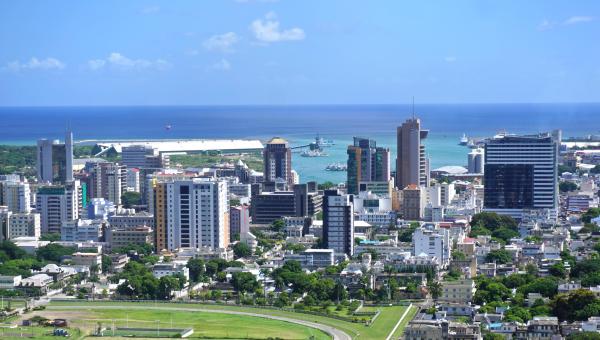
Where is the money?
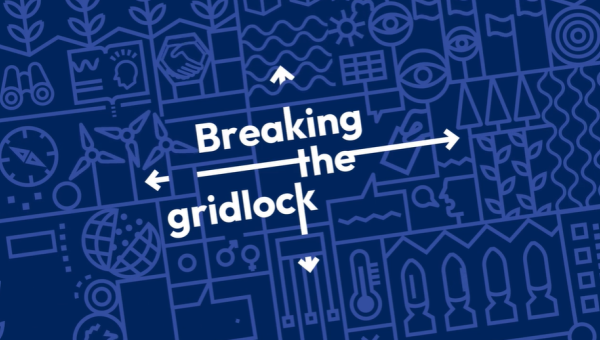
Breaking the gridlock
Sustainable cities and communities.

More than half of us live in cities. By 2050, two-thirds of all humanity—6.5 billion people—will be urban. Sustainable development cannot be achieved without significantly transforming the way we build and manage our urban spaces.
The rapid growth of cities—a result of rising populations and increasing migration—has led to a boom in mega-cities, especially in the developing world, and slums are becoming a more significant feature of urban life.
Making cities sustainable means creating career and business opportunities, safe and affordable housing, and building resilient societies and economies. It involves investment in public transport, creating green public spaces, and improving urban planning and management in participatory and inclusive ways.
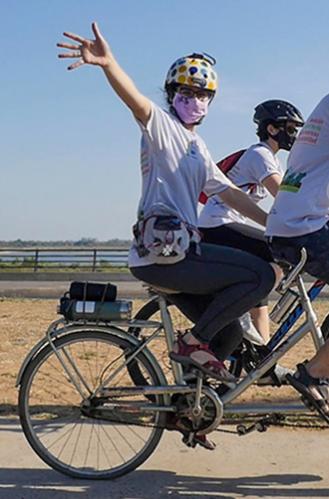
In 2018, 4.2 billion people, 55 percent of the world’s population, lived in cities. By 2050, the urban population is expected to reach 6.5 billion.
Cities occupy just 3 percent of the Earth’s land but account for 60 to 80 percent of energy consumption and at least 70 percent of carbon emissions.
828 million people are estimated to live in slums, and the number is rising.
In 1990, there were 10 cities with 10 million people or more; by 2014, the number of mega-cities rose to 28, and was expected to reach 33 by 2018. In the future, 9 out of 10 mega-cities will be in the developing world.
In the coming decades, 90 percent of urban expansion will be in the developing world.
The economic role of cities is significant. They generate about 80 percent of the global GDP.
- By 2030, ensure access for all to adequate, safe and affordable housing and basic services and upgrade slums
- By 2030, provide access to safe, affordable, accessible and sustainable transport systems for all, improving road safety, notably by expanding public transport, with special attention to the needs of those in vulnerable situations, women, children, persons with disabilities and older persons
- By 2030, enhance inclusive and sustainable urbanization and capacity for participatory, integrated and sustainable human settlement planning and management in all countries
- Strengthen efforts to protect and safeguard the world’s cultural and natural heritage
- By 2030, significantly reduce the number of deaths and the number of people affected and substantially decrease the direct economic losses relative to global gross domestic product caused by disasters, including water-related disasters, with a focus on protecting the poor and people in vulnerable situations
- By 2030, reduce the adverse per capita environmental impact of cities, including by paying special attention to air quality and municipal and other waste management
- By 2030, provide universal access to safe, inclusive and accessible, green and public spaces, in particular for women and children, older persons and persons with disabilities
- Support positive economic, social and environmental links between urban, peri-urban and rural areas by strengthening national and regional development planning
- By 2020, substantially increase the number of cities and human settlements adopting and implementing integrated policies and plans towards inclusion, resource efficiency, mitigation and adaptation to climate change, resilience to disasters, and develop and implement, in line with the Sendai Framework for Disaster Risk Reduction 2015-2030, holistic disaster risk management at all levels
- Support least developed countries, including through financial and technical assistance, in building sustainable and resilient buildings utilizing local materials
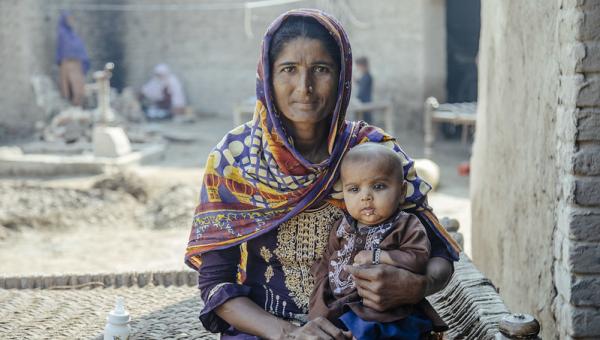
"I want my old life back."
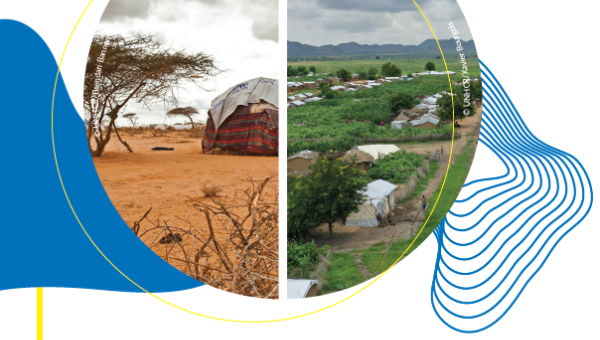
Collaboration for Inclusion an...
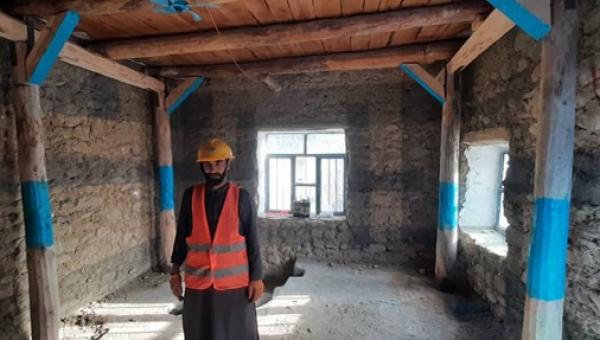
What is vernacular architectur...
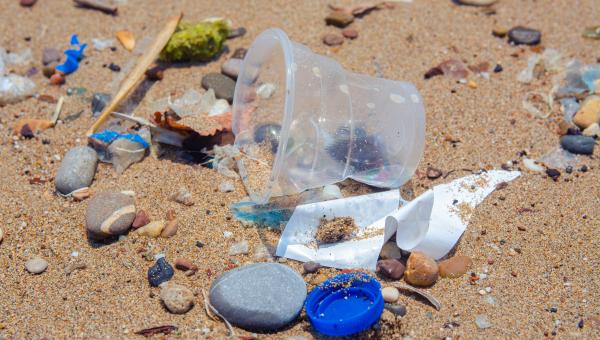
A global treaty to end plastic...
Responsible consumption and production.

Achieving economic growth and sustainable development requires that we urgently reduce our ecological footprint by changing the way we produce and consume goods and resources. Agriculture is the biggest user of water worldwide, and irrigation now claims close to 70 percent of all freshwater for human use.
The efficient management of our shared natural resources, and the way we dispose of toxic waste and pollutants, are important targets to achieve this goal. Encouraging industries, businesses and consumers to recycle and reduce waste is equally important, as is supporting developing countries to move towards more sustainable patterns of consumption by 2030.
A large share of the world population is still consuming far too little to meet even their basic needs. Halving the per capita of global food waste at the retailer and consumer levels is also important for creating more efficient production and supply chains. This can help with food security, and shift us towards a more resource efficient economy.
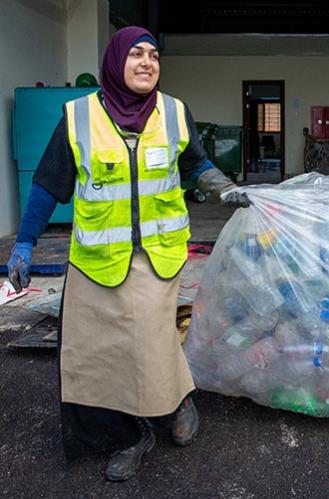
1.3 billion tonnes of food is wasted every year, while almost 2 billion people go hungry or undernourished.
The food sector accounts for around 22 percent of total greenhouse gas emissions, largely from the conversion of forests into farmland.
Globally, 2 billion people are overweight or obese.
Only 3 percent of the world’s water is fresh (drinkable), and humans are using it faster than nature can replenish it.
If people everywhere switched to energy efficient lightbulbs, the world would save US$120 billion annually.
One-fifth of the world’s final energy consumption in 2013 was from renewable sources.
- Implement the 10-year framework of programmes on sustainable consumption and production, all countries taking action, with developed countries taking the lead, taking into account the development and capabilities of developing countries
- By 2030, achieve the sustainable management and efficient use of natural resources
- By 2030, halve per capita global food waste at the retail and consumer levels and reduce food losses along production and supply chains, including post-harvest losses
- By 2020, achieve the environmentally sound management of chemicals and all wastes throughout their life cycle, in accordance with agreed international frameworks, and significantly reduce their release to air, water and soil in order to minimize their adverse impacts on human health and the environment
- By 2030, substantially reduce waste generation through prevention, reduction, recycling and reuse
- Encourage companies, especially large and transnational companies, to adopt sustainable practices and to integrate sustainability information into their reporting cycle
- Promote public procurement practices that are sustainable, in accordance with national policies and priorities
- By 2030, ensure that people everywhere have the relevant information and awareness for sustainable development and lifestyles in harmony with nature
- Support developing countries to strengthen their scientific and technological capacity to move towards more sustainable patterns of consumption and production
- Develop and implement tools to monitor sustainable development impacts for sustainable tourism that creates jobs and promotes local culture and products
- Rationalize inefficient fossil-fuel subsidies that encourage wasteful consumption by removing market distortions, in accordance with national circumstances, including by restructuring taxation and phasing out those harmful subsidies, where they exist, to reflect their environmental impacts, taking fully into account the specific needs and conditions of developing countries and minimizing the possible adverse impacts on their development in a manner that protects the poor and the affected communities
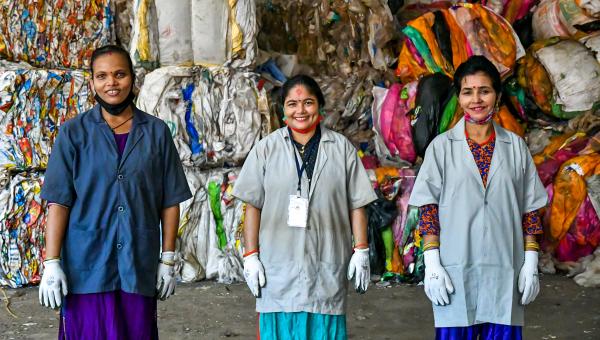
Unsung heroes: Four things pol...
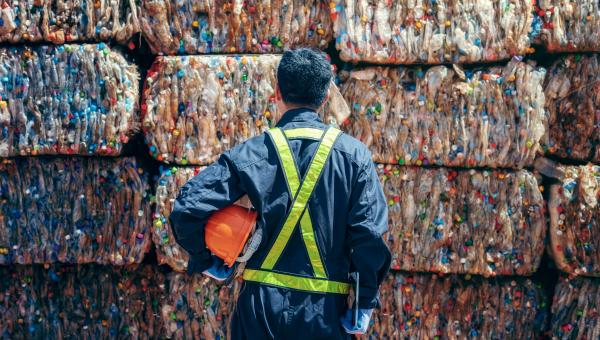
Why aren’t we recycling more p...
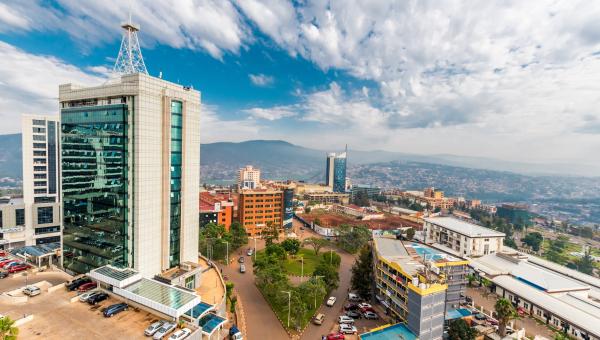
Umuganda: Rwanda’s audacity of...

Why the green, circular econom...
Climate action.

There is no country that is not experiencing the drastic effects of climate change. Greenhouse gas emissions are more than 50 percent higher than in 1990. Global warming is causing long-lasting changes to our climate system, which threatens irreversible consequences if we do not act.
The annual average economic losses from climate-related disasters are in the hundreds of billions of dollars. This is not to mention the human impact of geo-physical disasters, which are 91 percent climate-related, and which between 1998 and 2017 killed 1.3 million people, and left 4.4 billion injured. The goal aims to mobilize US$100 billion annually by 2020 to address the needs of developing countries to both adapt to climate change and invest in low-carbon development.
Supporting vulnerable regions will directly contribute not only to Goal 13 but also to the other SDGs. These actions must also go hand in hand with efforts to integrate disaster risk measures, sustainable natural resource management, and human security into national development strategies. It is still possible, with strong political will, increased investment, and using existing technology, to limit the increase in global mean temperature to two degrees Celsius above pre-industrial levels, aiming at 1.5 ° C, but this requires urgent and ambitious collective action.
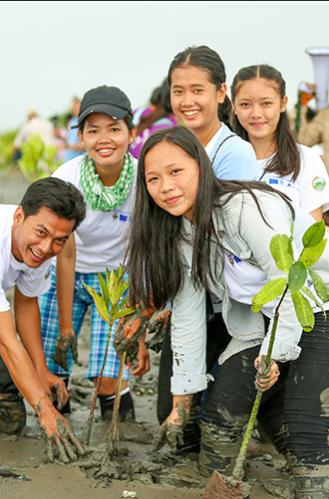
As of 2017 humans are estimated to have caused approximately 1.0°C of global warming above pre-industrial levels.
Sea levels have risen by about 20 cm (8 inches) since 1880 and are projected to rise another 30–122 cm (1 to 4 feet) by 2100.
To limit warming to 1.5C, global net CO2 emissions must drop by 45% between 2010 and 2030, and reach net zero around 2050.
Climate pledges under The Paris Agreement cover only one third of the emissions reductions needed to keep the world below 2°C.
Bold climate action could trigger at least US$26 trillion in economic benefits by 2030.
The energy sector alone will create around 18 million more jobs by 2030, focused specifically on sustainable energy.
- Strengthen resilience and adaptive capacity to climate-related hazards and natural disasters in all countries
- Integrate climate change measures into national policies, strategies and planning
- Improve education, awareness-raising and human and institutional capacity on climate change mitigation, adaptation, impact reduction and early warning
- Implement the commitment undertaken by developed-country parties to the United Nations Framework Convention on Climate Change to a goal of mobilizing jointly $100 billion annually by 2020 from all sources to address the needs of developing countries in the context of meaningful mitigation actions and transparency on implementation and fully operationalize the Green Climate Fund through its capitalization as soon as possible
- Promote mechanisms for raising capacity for effective climate change-related planning and management in least developed countries and small island developing States, including focusing on women, youth and local and marginalized communities
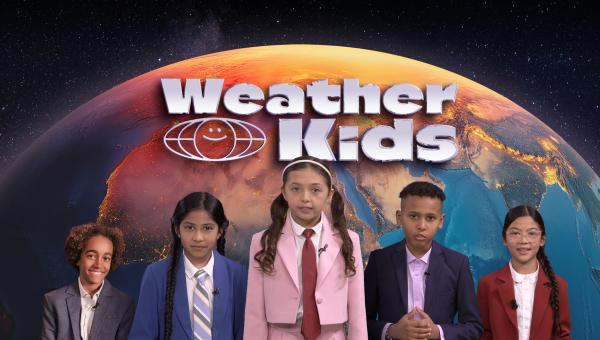
UNDP Disrupts Global Televisio...

UNDP partners with VCMI to ac...
Life below water.

The world’s oceans – their temperature, chemistry, currents and life – drive global systems that make the Earth habitable for humankind. How we manage this vital resource is essential for humanity as a whole, and to counterbalance the effects of climate change.
Over three billion people depend on marine and coastal biodiversity for their livelihoods. However, today we are seeing 30 percent of the world’s fish stocks overexploited, reaching below the level at which they can produce sustainable yields.
Oceans also absorb about 30 percent of the carbon dioxide produced by humans, and we are seeing a 26 percent rise in ocean acidification since the beginning of the industrial revolution. Marine pollution, an overwhelming majority of which comes from land-based sources, is reaching alarming levels, with an average of 13,000 pieces of plastic litter to be found on every square kilometre of ocean.
The SDGs aim to sustainably manage and protect marine and coastal ecosystems from pollution, as well as address the impacts of ocean acidification. Enhancing conservation and the sustainable use of ocean-based resources through international law will also help mitigate some of the challenges facing our oceans.

The ocean covers three quarters of the Earth’s surface and represents 99 percent of the living space on the planet by volume.
The ocean contains nearly 200,000 identified species, but actual numbers may lie in the millions.
As much as 40 percent of the ocean is heavily affected by pollution, depleted fisheries, loss of coastal habitats and other human activities.
The ocean absorbs about 30 percent of carbon dioxide produced by humans, buffering the impacts of global warming.
More than 3 billion people depend on marine and coastal biodiversity for their livelihoods.
The market value of marine and coastal resources and industries is estimated at US$3 trillion per year, about 5 percent of global GDP.
- By 2025, prevent and significantly reduce marine pollution of all kinds, in particular from land-based activities, including marine debris and nutrient pollution
- By 2020, sustainably manage and protect marine and coastal ecosystems to avoid significant adverse impacts, including by strengthening their resilience, and take action for their restoration in order to achieve healthy and productive oceans
- Minimize and address the impacts of ocean acidification, including through enhanced scientific cooperation at all levels
- By 2020, effectively regulate harvesting and end overfishing, illegal, unreported and unregulated fishing and destructive fishing practices and implement science-based management plans, in order to restore fish stocks in the shortest time feasible, at least to levels that can produce maximum sustainable yield as determined by their biological characteristics
- By 2020, conserve at least 10 per cent of coastal and marine areas, consistent with national and international law and based on the best available scientific information
- By 2020, prohibit certain forms of fisheries subsidies which contribute to overcapacity and overfishing, eliminate subsidies that contribute to illegal, unreported and unregulated fishing and refrain from introducing new such subsidies, recognizing that appropriate and effective special and differential treatment for developing and least developed countries should be an integral part of the World Trade Organization fisheries subsidies negotiation
- By 2030, increase the economic benefits to Small Island developing States and least developed countries from the sustainable use of marine resources, including through sustainable management of fisheries, aquaculture and tourism
- Increase scientific knowledge, develop research capacity and transfer marine technology, taking into account the Intergovernmental Oceanographic Commission Criteria and Guidelines on the Transfer of Marine Technology, in order to improve ocean health and to enhance the contribution of marine biodiversity to the development of developing countries, in particular small island developing States and least developed countries
- Provide access for small-scale artisanal fishers to marine resources and markets
- Enhance the conservation and sustainable use of oceans and their resources by implementing international law as reflected in UNCLOS, which provides the legal framework for the conservation and sustainable use of oceans and their resources, as recalled in paragraph 158 of The Future We Want
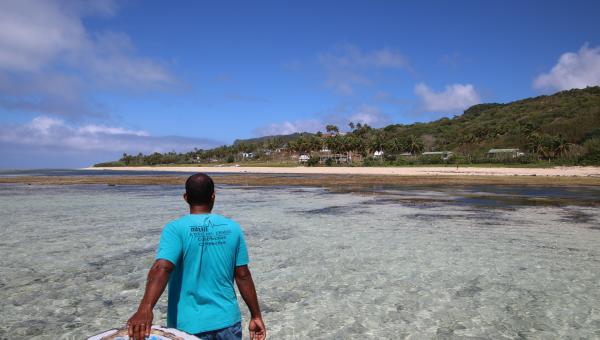
Investing in SIDS and LLDCs is...
Small island developing states and pathways t....
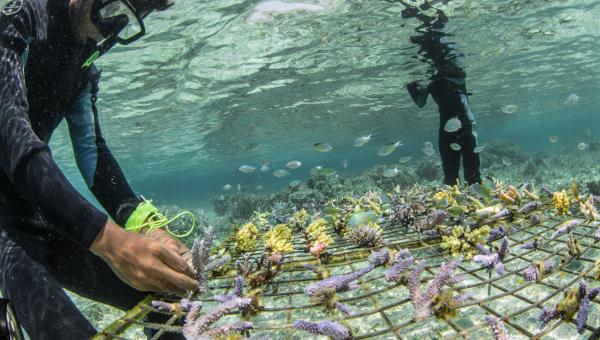
UNDP welcomes UN-Oceans Agreem...
Life on land.

Human life depends on the earth as much as the ocean for our sustenance and livelihoods. Plant life provides 80 percent of the human diet, and we rely on agriculture as an important economic resources. Forests cover 30 percent of the Earth’s surface, provide vital habitats for millions of species, and important sources for clean air and water, as well as being crucial for combating climate change.
Every year, 13 million hectares of forests are lost, while the persistent degradation of drylands has led to the desertification of 3.6 billion hectares, disproportionately affecting poor communities.
While 15 percent of land is protected, biodiversity is still at risk. Nearly 7,000 species of animals and plants have been illegally traded. Wildlife trafficking not only erodes biodiversity, but creates insecurity, fuels conflict, and feeds corruption.
Urgent action must be taken to reduce the loss of natural habitats and biodiversity which are part of our common heritage and support global food and water security, climate change mitigation and adaptation, and peace and security.

Around 1.6 billion people depend on forests for their livelihoods.
Forests are home to more than 80 percent of all terrestrial species of animals, plants and insects.
2.6 billion people depend directly on agriculture for a living.
Nature-based climate solutions can contribute about a third of CO2 reductions by 2030.
The value of ecosystems to human livelihoods and well-being is $US125 trillion per year.v
Mountain regions provide 60-80 percent of the Earth's fresh water.
- By 2020, ensure the conservation, restoration and sustainable use of terrestrial and inland freshwater ecosystems and their services, in particular forests, wetlands, mountains and drylands, in line with obligations under international agreements
- By 2020, promote the implementation of sustainable management of all types of forests, halt deforestation, restore degraded forests and substantially increase afforestation and reforestation globally
- By 2030, combat desertification, restore degraded land and soil, including land affected by desertification, drought and floods, and strive to achieve a land degradation-neutral world
- By 2030, ensure the conservation of mountain ecosystems, including their biodiversity, in order to enhance their capacity to provide benefits that are essential for sustainable development
- Take urgent and significant action to reduce the degradation of natural habitats, halt the loss of biodiversity and, by 2020, protect and prevent the extinction of threatened species
- Promote fair and equitable sharing of the benefits arising from the utilization of genetic resources and promote appropriate access to such resources, as internationally agreed
- Take urgent action to end poaching and trafficking of protected species of flora and fauna and address both demand and supply of illegal wildlife products
- By 2020, introduce measures to prevent the introduction and significantly reduce the impact of invasive alien species on land and water ecosystems and control or eradicate the priority species
- By 2020, integrate ecosystem and biodiversity values into national and local planning, development processes, poverty reduction strategies and accounts
- Mobilize and significantly increase financial resources from all sources to conserve and sustainably use biodiversity and ecosystems
- Mobilize significant resources from all sources and at all levels to finance sustainable forest management and provide adequate incentives to developing countries to advance such management, including for conservation and reforestation
- Enhance global support for efforts to combat poaching and trafficking of protected species, including by increasing the capacity of local communities to pursue sustainable livelihood opportunities

Over the hump

WWD 2024 international youth a...
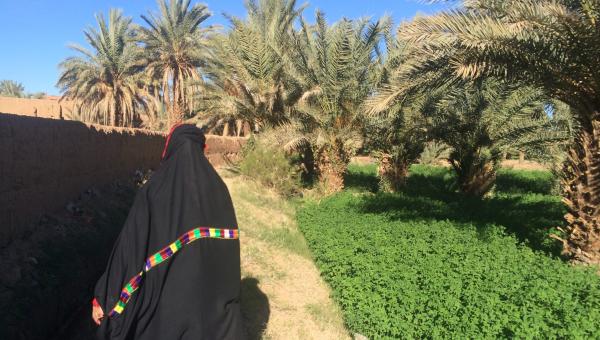
Cultivating resilience: Women'...
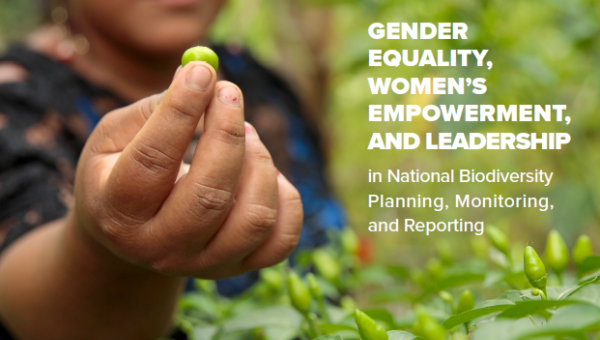
Gender Equality, Women's Empow...

New GEF funds scales up ambiti...
Peace, justice and strong institutions.

We cannot hope for sustainable development without peace, stability, human rights and effective governance, based on the rule of law. Yet our world is increasingly divided. Some regions enjoy peace, security and prosperity, while others fall into seemingly endless cycles of conflict and violence. This is not inevitable and must be addressed.
Armed violence and insecurity have a destructive impact on a country’s development, affecting economic growth, and often resulting in grievances that last for generations. Sexual violence, crime, exploitation and torture are also prevalent where there is conflict, or no rule of law, and countries must take measures to protect those who are most at risk
The SDGs aim to significantly reduce all forms of violence, and work with governments and communities to end conflict and insecurity. Promoting the rule of law and human rights are key to this process, as is reducing the flow of illicit arms and strengthening the participation of developing countries in the institutions of global governance.
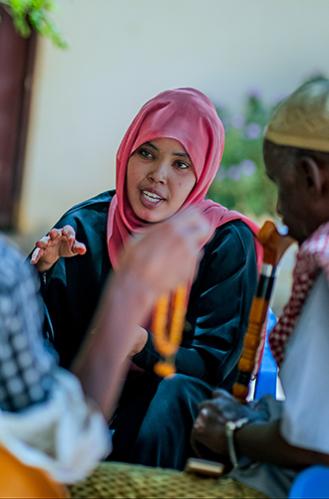
By the end of 2017, 68.5 million people had been forcibly displaced as a result of persecution, conflict, violence or human rights violations.
There are at least 10 million stateless people who have been denied nationality and its related rights.
Corruption, bribery, theft and tax evasion cost developing countries US$1.26 trillion per year.
49 countries lack laws protecting women from domestic violence.
In 46 countries, women now hold more than 30 percent of seats in at least one chamber of national parliament.
1 billion people are legally ‘invisible’ because they cannot prove who they are. This includes an estimated 625 million children under 14 whose births were never registered.
- Significantly reduce all forms of violence and related death rates everywhere
- End abuse, exploitation, trafficking and all forms of violence against and torture of children
- Promote the rule of law at the national and international levels and ensure equal access to justice for all
- By 2030, significantly reduce illicit financial and arms flows, strengthen the recovery and return of stolen assets and combat all forms of organized crime
- Substantially reduce corruption and bribery in all their forms
- Develop effective, accountable and transparent institutions at all levels
- Ensure responsive, inclusive, participatory and representative decision-making at all levels
- Broaden and strengthen the participation of developing countries in the institutions of global governance
- By 2030, provide legal identity for all, including birth registration
- Ensure public access to information and protect fundamental freedoms, in accordance with national legislation and international agreements
- Strengthen relevant national institutions, including through international cooperation, for building capacity at all levels, in particular in developing countries, to prevent violence and combat terrorism and crime
- Promote and enforce non-discriminatory laws and policies for sustainable development
Partnerships for the goals

The SDGs can only be realized with strong global partnerships and cooperation. Official Development Assistance remained steady but below target, at US$147 billion in 2017. While humanitarian crises brought on by conflict or natural disasters continue to demand more financial resources and aid. Many countries also require Official Development Assistance to encourage growth and trade.
The world is more interconnected than ever. Improving access to technology and knowledge is an important way to share ideas and foster innovation. Coordinating policies to help developing countries manage their debt, as well as promoting investment for the least developed, is vital for sustainable growth and development.
The goals aim to enhance North-South and South-South cooperation by supporting national plans to achieve all the targets. Promoting international trade, and helping developing countries increase their exports is all part of achieving a universal rules-based and equitable trading system that is fair and open and benefits all.
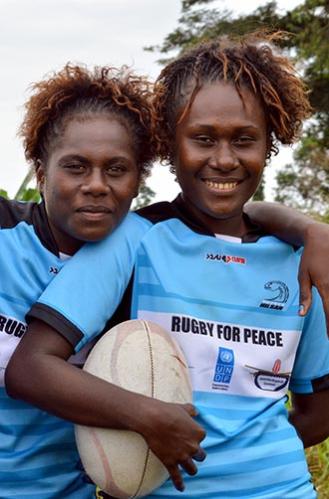
The UN Conference on Trade and Development (UNCTAD) says achieving SDGs will require US$5 trillion to $7 trillion in annual investment.
Total official development assistance reached US$147.2 billion in 2017.
In 2017, international remittances totaled US$613 billion; 76 percent of it went to developing countries.
In 2016, 6 countries met the international target to keep official development assistance at or above 0.7 percent of gross national income.
Sustainable and responsible investments represent high-potential sources of capital for SDGs. As of 2016, US$18.2 trillion was invested in this asset class.
The bond market for sustainable business is growing. In 2018 global green bonds reached US$155.5billion, up 78 percent from previous year.
- Strengthen domestic resource mobilization, including through international support to developing countries, to improve domestic capacity for tax and other revenue collection
- Developed countries to implement fully their official development assistance commitments, including the commitment by many developed countries to achieve the target of 0.7 per cent of ODA/GNI to developing countries and 0.15 to 0.20 per cent of ODA/GNI to least developed countries ODA providers are encouraged to consider setting a target to provide at least 0.20 per cent of ODA/GNI to least developed countries
- Mobilize additional financial resources for developing countries from multiple sources
- Assist developing countries in attaining long-term debt sustainability through coordinated policies aimed at fostering debt financing, debt relief and debt restructuring, as appropriate, and address the external debt of highly indebted poor countries to reduce debt distress
- Adopt and implement investment promotion regimes for least developed countries
- Enhance North-South, South-South and triangular regional and international cooperation on and access to science, technology and innovation and enhance knowledge sharing on mutually agreed terms, including through improved coordination among existing mechanisms, in particular at the United Nations level, and through a global technology facilitation mechanism
- Promote the development, transfer, dissemination and diffusion of environmentally sound technologies to developing countries on favourable terms, including on concessional and preferential terms, as mutually agreed
- Fully operationalize the technology bank and science, technology and innovation capacity-building mechanism for least developed countries by 2017 and enhance the use of enabling technology, in particular information and communications technology
Capacity building
- Enhance international support for implementing effective and targeted capacity-building in developing countries to support national plans to implement all the sustainable development goals, including through North-South, South-South and triangular cooperation
- Promote a universal, rules-based, open, non-discriminatory and equitable multilateral trading system under the World Trade Organization, including through the conclusion of negotiations under its Doha Development Agenda
- Significantly increase the exports of developing countries, in particular with a view to doubling the least developed countries’ share of global exports by 2020
- Realize timely implementation of duty-free and quota-free market access on a lasting basis for all least developed countries, consistent with World Trade Organization decisions, including by ensuring that preferential rules of origin applicable to imports from least developed countries are transparent and simple, and contribute to facilitating market access
Systemic issues
Policy and institutional coherence
- Enhance global macroeconomic stability, including through policy coordination and policy coherence
- Enhance policy coherence for sustainable development
- Respect each country’s policy space and leadership to establish and implement policies for poverty eradication and sustainable development
Multi-stakeholder partnerships
- Enhance the global partnership for sustainable development, complemented by multi-stakeholder partnerships that mobilize and share knowledge, expertise, technology and financial resources, to support the achievement of the sustainable development goals in all countries, in particular developing countries
- Encourage and promote effective public, public-private and civil society partnerships, building on the experience and resourcing strategies of partnerships
Data, monitoring and accountability
- By 2020, enhance capacity-building support to developing countries, including for least developed countries and small island developing States, to increase significantly the availability of high-quality, timely and reliable data disaggregated by income, gender, age, race, ethnicity, migratory status, disability, geographic location and other characteristics relevant in national contexts
- By 2030, build on existing initiatives to develop measurements of progress on sustainable development that complement gross domestic product, and support statistical capacity-building in developing countries
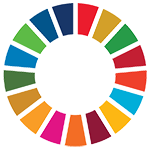
Sustainable Development Goals Integration
An official website of the United States government
The .gov means it’s official. Federal government websites often end in .gov or .mil. Before sharing sensitive information, make sure you’re on a federal government site.
The site is secure. The https:// ensures that you are connecting to the official website and that any information you provide is encrypted and transmitted securely.
- Publications
- Account settings
Preview improvements coming to the PMC website in October 2024. Learn More or Try it out now .
- Advanced Search
- Journal List
- PLoS Comput Biol
- v.16(9); 2020 Sep

Ten simple rules to make your research more sustainable
Anne-laure ligozat.
1 Université Paris-Saclay, CNRS, LIMSI, Orsay, France
2 ENSIIE, Evry-Courcouronnes, France
Aurélie Névéol
Bénédicte daly, emmanuelle frenoux, introduction.
Sustainable development can be defined as a principle that regulates human activity without causing irreparable damage to the Earth's natural system. It also aims to preserve resources so that future generations can benefit from them as much as present generations. To address the global challenges today's world faces to manage the impact of human activity on the environment, the United Nations have defined a set of sustainable development goals to be achieved in the next decade [ 1 ].
The climate changes induced by human activities have been accelerating alarmingly as reported by scientists since 1979 [ 2 ]. Scientists can observe an increase in pollution (e.g., depletion of oxygen in water, eutrophication), natural resource scarcity, and a significant and accelerated loss of biodiversity. All these changes have led geologists to propose the Anthropocene as a new geological epoch, reflecting the impact of human activities on Earth's ecosystems[ 3 ].
To mitigate this effect, a paradigmatic shift represented by sustainable development is needed in all fields of human activities, including research. As individuals and researchers, we are concerned with these challenges and deeply aware of the necessity to be more sustainable. But in practice, what does this entail? How can a researcher's activity be “sustainable,” and how do we integrate sustainable practices into research projects? Where do we start?
There is currently no global policy from French research institutes to federate collective action of the scientific community towards sustainable development goals, but working groups focusing on sustainable development have published recommendations [ 4 ]. There are also examples of good practice in the United Kingdom (S-Labs [ 5 ], Laboratory Efficiency Assessment Framework [ 6 ]) and the United States (International Institute for Sustainable Laboratories [ 7 ], My Green Lab [ 8 ]).
Taking action to address the emergency situation is not only a moral responsibility we have as citizens but also a necessary contribution to gathering an understanding of the impact of research activities on the environment and how to make them more sustainable.
This article is the result of the work carried out by the "sustainable development" committee created at the French Laboratoire d'informatique pour la Mécanique et les Sciences de l'Ingénieur (LIMSI) [ 9 ] in 2019 to bring together researchers interested in addressing these questions in the context of the activities of our laboratory, which conducts theoretical and experimental research in a diversity of scientific fields, including fluid mechanics, energetics, human language technology, human machine interaction, medical informatics, and augmented and virtual reality.
The first task of the committee was to assess the carbon footprint of research activities over the year 2018 [ 10 ]. The next task is to analyze the results of this study and draw a roadmap towards reducing the carbon footprint and, more generally, the environmental impact [ 11 ] of our research activities in subsequent years.
Herein, we propose a list of actionable rules to facilitate the contribution of anyone in the community towards sustainable research. We selected a set of rules that address a variety of topics with different levels of potential impact with the goal of illustrating the breadth of possible actions.
Rule 1: Cherry-picking is allowed
Why does it matter.
It can be daunting to think about all you should be doing to strive towards sustainability. However, in the words of popular wisdom, Rome wasn't built in a day, and every little thing helps. We want to acknowledge here that integrating sustainability into our research is a big step for many of us and that this change may need to be gradual, according to behavioral theory [ 12 ]
How to address it?
You can start your path towards sustainable research today by picking only one of the suggestions below and committing to it. Depending on your particular field of research or interests, some rules may be easier to implement than others.
Rule 2: Be informed
Information is the foundation of sustainable action. According to the Paris Agreement [ 13 ], we have a global goal of achieving carbon neutrality in 2050 and halving current carbon emissions by 2030. Drastically reducing the carbon footprint of human activities can only be achieved if we are well aware of the specific impact of the different carbon-emitting activities.
Research institutes should ensure that their staff receive some training on environmental issues related to energy, climate and biodiversity. Training courses are available on this subject, including Massive Open Online Courses (MOOC) through popular platform such as Université Virtuelle Environnement et Développement Durable (UVED) [ 14 ] in French and Coursera [ 15 ] in English. The sustainability literacy test [ 16 ] is a tool approved by the United Nations for learning general knowledge relating to the environment that could also be used to enhance workers’ and students’ knowledge. In addition, general public documents such as summaries of Intergovernmental Panel on Climate Change (IPCC) reports or reports from think tanks such as the The Shift Project or the Green Alliance can also be used as information material, as well as documents from environmental nongovernmental organizations such as 350.org or Greenpeace. Awareness of these issues will facilitate their inclusion in lab operations and scientific work.
Evaluating the carbon footprint of your lab/institute is an excellent start. An information search for reports of carbon footprint assessments conducted by laboratories or institutes in the same field can also help identify major trends. Typically, for research labs, travel accounts for a significant portion of carbon emissions. Other major sources of carbon emissions include electricity used for building operations as well as computer power. In France, the labos1point5 [ 17 ] collective is offering support to labs interested in assessing their carbon footprint.
Carbon footprint assessment can also be done at the scale of specific research activities. Researchers can apply their knowledge of how to evaluate and compare the impacts of two alternatives. For example, from an environmental point of view, is it better to continue using legacy equipment that may require more power or to invest in new equipment that will require less power but incur environmental construction costs [ 18 ]? Which videoconference system incurs the lowest energy consumption [ 19 ]?
Although these questions may be hard to answer, some of them can be addressed using widely recognized methodologies, such as Life Cycle Assessment (LCA). LCA enables the assessment of environmental impacts of a service or product by taking into account all the stages of its life cycle according to different criteria, including but not limited to carbon dioxide CO 2 measurement. This again requires that research staff be trained on these methodologies, in order to apply them properly. The results obtained may differ substantially on a case-by-case basis because the assessment is dependent on the location and specific set-up. For example, whether the electricity used comes from low-carbon sources will have an impact. In some cases, the LCA will nevertheless remain difficult if key relevant data (e.g., electric power provenance) is not available.
Rule 3: Prefer train over plane
The main source of global CO 2 equivalent emissions in several research institutes is travel. For example, at LIMSI, in 2018, travel accounted for 50% of the total emissions [ 10 ], including about 35% for transportation to attend scientific meetings or conduct field work and an additional 15% for employees’ commutes. Other case studies at two academic institutions in Switzerland and in the US also found travel to account for a large share of their carbon footprint, with air travel alone accounting for 30% of all CO 2 emissions [ 20 , 21 ].
Fig 1 presents a sample comparison between plane and train travel for two sample itineraries to illustrate the CO 2 emission gain offered by train travel for medium range journeys: one international journey within Europe (Paris–Turin, 584 kilometers/363 miles) and one domestic journey withing the US (New York, New York–Washington, DC, 474 kilometers/295 miles).

Plane emissions were calculated with the https://co2.myclimate.org/en/flight_calculators/newmyclimate flight calculator. Flight durations are estimated using https://www.expedia.fr/expedia . Train emissions and durations come from oui.sncf/SNCF for the Paris–Turin journey and from https://www.virail.frvirail for the New York, New York–Washington, DC journey.
This data shows that carbon emissions associated with train travel represent a mere fraction of those associated with plane travel (9.2% for New York/Washington and 1% for Paris/Turin), while travel duration increases by about 2 hours (precisely 2 hours 12 minutes for New York/Washington and 2 hours 21 minutes for Paris/Turin), which is arguably equivalent to the time associated with air travel formalities, including city/airport commute and airport security procedures.
This data shows that traveling by train instead of plane can massively reduce the footprint of academic travel. While travel is perceived as essential to a researcher's activity [ 22 ], it was also shown that air travel has a limited influence on academic professional success [ 23 ] for senior researchers. Therefore, train travel should be favored whenever possible. We also encourage researchers to reduce their travel footprint by favoring attendance to scientific meetings in locations that can be reached by train and to limit their conference travel, which scientists seem willing to do [ 24 , 25 ].
This rule applies mainly for short distance travel, which only accounts for a fraction of academic travel. Typically, the train is not an option for traveling from Paris (France) to San Franciso, California (US). The impact of a Paris–San Francisco round-trip flight in terms of CO 2 emissions (2.9 tons according to myclimate) is roughly equivalent to 10 times that of a domestic Paris–Toulouse round trip (314 kg according to myclimate). Favoring train over plane will not reduce emissions related to long-distance trips and thereby may have limited impact over global travel-related emissions if long-distance travel accounts for the majority of travel. As a result, it is necessary to limit long-distance travel by assessing the need for travel, encouraging local collaboration, and adopting publication methods that restrict travel, such as journal publications or domestic conferences.
Rule 4: Take advantage of remote participation
As discussed above, it is necessary to limit long distance travels because they incur a high level of carbon emissions within the overall travel category, which is a major source of emissions for research institutions.
Remote participation in conferences and webinars can be encouraged and facilitated.
Pioneer events showed that entirely remote conferences can be organized to the satisfaction of an overwhelming majority of participants: 10 years ago, computational biologists published a set of guidelines for organizing such events as an effective low-cost educational strategy [ 26 ]. More recently, the University of California at Santa Barbara also devised a plan to organize remote conferences [ 21 ] in which conference participants were invited to record their talks ahead of the event; the videos were then made available on the conference website, and direct interaction with the authors was supported by message forum within the conference timeline. A similar set-up was used for the Cochrane Colloquium 2019 after the event had to be cancelled due to local political events [ 27 ]. A more complete list of conferences aiming to limit their carbon emissions is available at https://www.appropedia.org/List_of_low-carbon_conferences , and recent guidelines provide support for organizing non–real-time events [ 28 ]. The recent global public health crisis due to the COVID-19 outbreak is providing additional motivation for organizing remote events[ 29 ].
These events show that it is technically feasible to engineer fully remote participation in conferences. However, one of the benefits of conference participation is the networking and personal interactions between colleagues occurring during coffee breaks and social events. For this reason, the scientific community may want to continue fostering in-person meetings. To support this middle-ground solution, remote participation can be promoted as a systematically available option for all conferences and meetings [ 30 ]. This way, researchers may balance their conference attendance between in-person and remote attendance.
Another option that can help reduce the carbon footprint of conferences is to create small groups of participants that can meet in person in a local venue to attend a remote event. The 2010 "Signs of Change" conference was organized according to this model and offered five locations throughout New Zealand for participants to meet [ 31 ].
Rule 5: Work collectively and reproducibly
Many of the resources allocated to research activities—including resources that have an impact on the environment—are wasted due to a multiplicity of factors related to the organization, planning, and evaluation of research [ 32 ].
For example, the inadequate use of statistical methods or the fact that novelty is valued more than reproducibility results in waste that could be otherwise avoided. The practice of sharing protocols, research material such as code, and results contributes to collective work and avoids waste in the form of duplicate efforts.
Applying the classic scientific method is particularly useful here. First, do a thorough literature search to identify useful related work to a new project. If existing systems or models addressing the task at hand are identified, they should be reused. Novelty and originality does not necessarily come from new methods; an existing method can be novel if applied to a new context or used differently from usual practice. Furthermore, reusing existing material can also bring added value by demonstrating its reproducibility, documenting a reuse case from the perspective of users with a different background or experimental set-up [ 33 , 34 ].
If a thorough literature search does not uncover readily usable solutions, it makes sense to develop new methods or tools. In this case, working reproducibly will help researchers make the most of their work, by documenting protocols and sharing material. In fact, the value of reproducibility is increasingly promoted by "reproducibility challenges" that seek to reproduce prominent work and gather information about the process. The events Neural Information Processing Systems (NeurIPS) 2019 Reproducibility challenge [ 35 ] and the Shared Task on the Reproduction of Research Results in Science and Technology of Language,"REPROLANG 2020" [ 36 ] are examples of reproducibility tasks in the fields of Natural Language Processing and Machine Learning. In 2020, the Empirical Methods in Natural Language Processing (EMNLP) conference added reproducibility criteria during the submission process about the description of experimental results, parameters, and datasets, based on [ 37 ] and [ 38 ], which is also a good way to promote reproducibility of research work.
Rule 6: Encourage bottom-up sustainable initiatives
Engaging the community on the topic of sustainability will create interest in the topic and in how it is addressed within the community. Empowering members of the community will contribute to the emergence of solutions that are tailored to the community culture and that will find stronger support within the community [ 39 ].
Researchers are creative. Let them implement ideas towards more sustainable practice.
Typically, many of the initiatives cited in this manuscript came from researchers themselves and have been widely adopted. Methods for organizing remote conferences are one example which has shown increased popularity with the recent pandemic.
Supporting this type of initiative (environmental impact of research operation/policy) as a research question will help with researching and adopting some of these ideas. There are many ways this support can translate into actionable policies for a variety of actors in higher education and research: by funding researchers' work in this area, even if it is outside of their main expertise, e.g., labs could fund researchers experiments towards addressing these questions, journals could waive publication fees for this type of work, and institutes could recognize this type of contribution in staff evaluation or provide special allowance to allocate a portion of their time working on these issues.
Rule 7: Evaluate the impact of your research practices
Like all human activities, research has an environmental impact that we need to be aware of (see Rule 2). Until now, we have mainly discussed the impact of the research environment rather than research activities in and of themselves. The raising awareness for environmental issues combined with the increasing energy needed for implementing modern machine learning algorithms has brought about the emerging field of so-called "green" artificial intelligence, which seeks to reconcile powerful computing with environment friendly research [ 40 ].
When conducting research, factor in the direct, indirect, and structural environmental impacts of your research. Direct impact covers the carbon footprint of the operational conduct of the research. For example, it includes the carbon footprint of overall research practice and can be taken into account by addressing questions such as the following: When two methods are otherwise equivalent in performance, which one has the smaller carbon footprint? Did you take computational cost and its environmental impact in your method evaluation/reporting [ 38 , 41 ]?
Indirect and structural impact covers the consequences of the new knowledge or findings obtained as a result of the research. For example, improving the energy efficiency of a learning algorithm could lead to increased experimentation, which, in the long run, does not reduce energy use (this typical rebound effect is described in [ 18 ]). Indirect and structural impact can be taken into account by addressing questions such as the following: What are the consequences of the discoveries we make? Do they contribute to a more sustainable world or, on the contrary, to a runaway machine, even indirectly?
Rule 8: Ask sustainability research questions
Rule 2 and others have highlighted how information is key to address sustainability. Research aims to create new knowledge and therefore can have a contribution to our information on sustainability issues and how to address them.
Computer science (CS) is well positioned for offering analysis of problems using predictive models, simulation and visualization methods that can be applied to a large range of sustainability problems. The National Research Council Committee on Computing Research for Environmental and Societal Sustainability has suggested that "[s]marter energy grids, sustainable agriculture, and resilient infrastructure provide three concrete and important examples of the potential role of IT innovation and CS research in sustainability." [ 42 ]
However, the benefit of work on sustainability research questions must be balanced with the impact of such research (see Rule 7). For example, although information and communication technologies are often considered as a means for reducing energy demands and emissions, a recent study [ 43 ] showed that digitalization actually increases energy consumption. Standard methodologies can be used here, such as attributional LCA (see Rule 2), which takes into account the direct environmental impacts. The more general and long-term impact of research work can be difficult to anticipate or predict. Typically, researchers investigating electricity in the 17th and 18th century may not have foreseen the climate crisis we are facing today due to CO 2 emissions generated by electricity-powered technology. In order to assess research impact at a global level, consequential LCA can also be used. It goes beyond the direct impacts and may require multidisciplinary work involving economists, sociologists, philosophers, etc.
Furthermore, researchers can be encouraged to think about research questions outside of their main expertise (see Rule 6). For example, several French groups with an interest in advancing sustainability policies [ 17 ] drafted incentive and coercive plans to reduce airplane travel in research labs. The incentive measure consists in making it mandatory to compensate the carbon emissions linked to travel by funding compensating projects. The coercive measure consists in banning travel as soon as the yearly carbon quota defined either per lab or per researcher has been reached. They are suggesting enforcing these policies in pilot institutes as a scientific experiment to test adherence and impact.
Rule 9: Transfer ecofriendly gestures from home to the lab
Studies show that individual actions towards sustainability in the form of ecofriendly gestures can contribute towards achieving up to 45% of the carbon footprint reduction that needs to be achieved collectively by 2050 [ 44 ].
Ecofriendly gestures practiced at home by many are also relevant in a professional setting and can have a significant impact. These ecofriendly gestures are not necessarily trivial to implement in the workplace because individuals are not directly involved in the global administration of the infrastructure. Typically, for security and logistical reasons, electric facilities cannot be openly accessible to all. Nonetheless, based on recommendations for carbon reduction [ 44 ] and our own example of carbon emissions at LIMSI [ 10 ], the following points can be brought to the attention of infrastructure management officials within an institute:
- Limit the use of (plastic) disposable material [ 45 ].
- Practice printing sobriety: think before you print and collect printed documents.
- Encourage employees to use soft modes of transport for local commutes (see also Rules 3 and 4).
- Favor local, seasonal, and vegetarian food when organizing events.
- Practice digital sobriety: use less material, make it last as long as possible, and consider donations when research use of otherwise-functioning equipment is no longer appropriate.
- Organize trash collection to encourage or facilitate recycling.
- Consider the feasibility of switching off lights and servers during off–peak-use periods.
Rule 10: Raise awareness
Sustainable actions have an impact both at the individual and collective level. The strength of the impact directly depends on the support of many individuals. As a result, it is important to raise awareness to convince and gain the support of others.
Communication officers at research institutes are in charge of internal communication using diverse means including custom visual tools and social media. They are excellent assets to support an awareness campaign on sustainability issues. For example, the contribution of LIMSI's communication director to the sustainable development committee includes the creation of a series of handouts around the theme of "Mon labo écolo" (My green lab). Fig 2 presents sample handouts produced by the LIMSI communication officer to raise awareness of lab members on major issues such as power use ( Fig 2A ) and travel ( Fig 2B ).

(A) Translation of hand-out content into English: “My Green Lab—BUILDINGS—(electricity) 90,000 € pa, 2/3 for server room (heat) 26,000 € pa (action) Switch off servers, computers, screens, lights when not in use. Open window? Radiator off!” (B) Translation of hand-out content into English: “My Green Lab—TRAVEL—(map) travel is responsible for half of the lab’s carbon footprint, with plane travel accounting for 99% of the travel footprint (action) prefer train over plane; question the necessity of travel.” Text and design by Bénédicte Daly .
These documents are used at LIMSI to promote sustainable action around the lab and can be used/customized as desired.
The goal of this article is to provide researchers with guidance for integrating sustainable practices into their activities. These 10 rules are positioned in the paradigm of science as it is conducted today. We posit that modern environmental and public health issues suggest the need for a massive paradigm shift. Calls to this effect have already been issued within the scientific community [ 46 ], such as the "slow science manifesto" [ 47 ].
In this situation, we stress the importance of cherry-picking and easing into change step by step to avoid being overwhelmed by the magnitude of the task.
A major step towards achieving sustainable research requires being informed about the impact of our activities as well as the impact of the simple choices we can make, as outlined by this set of 10 rules.
Acknowledgments
The authors thank Gabriel Illouz, Mathilde Véron, and members of the sustainable development committee at LIMSI for fruitful conversations during the preliminary stages of preparing this manuscript. Portions of this article were written by post-editing text that was translated from French into English with www.DeepL.com/Translator (free version).
Funding Statement
This work was supported by CNRS, ENSIIE, and Université Paris Saclay. The funders had no role in study design, data collection and analysis, decision to publish, or preparation of the manuscript.
ORIGINAL RESEARCH article
Urban sustainable development: inner logic and exploration in guangzhou provisionally accepted.

- 1 Guangzhou City Construction College, China
- 2 Guangzhou Institute Of Science And Technology, China
The final, formatted version of the article will be published soon.
Guangzhou, China, is experiencing numerous urban renewal activities. To achieve sustainable urban development, various related policies and strategies have been implemented. For better understanding of sustainable urban development, many research studies on urban sustainability assessment have been carried out. While traditional indicator indices are usually used to assess urban sustainability performance, few studies have been conducted on urban renewal activities. Moreover, urban development is a complex system and existing methods can no longer reflect the linkages between variables. Therefore, this study aims to develop a system dynamics model to simulate urban sustainability performance from the perspective of urban renewal. The system dynamics model consists of four subsystems, which are urban economic sector, social service sector, demolition and resettlement sector, and industrial development sector. The system dynamics model then uses seven scenarios to simulate the sustainability performance of Guangzhou city. The results show that the system dynamics model can simulate the sustainability performance of the city from the perspective of urban renewal, and can help decision makers to formulate appropriate strategies for sustainable urban development. In addition, it was found in the simulation results of the seven scenarios that increasing the ratio of in-site rehousing and off-site rehousing at the same time can promote sustainable urban development.
Keywords: Urban studies1, Sustainable cities2, Urban renewal3, Causal Loop diagrams4, Dynamics of the system5
Received: 09 Aug 2023; Accepted: 11 Apr 2024.
Copyright: © 2024 Luo and Yan. This is an open-access article distributed under the terms of the Creative Commons Attribution License (CC BY) . The use, distribution or reproduction in other forums is permitted, provided the original author(s) or licensor are credited and that the original publication in this journal is cited, in accordance with accepted academic practice. No use, distribution or reproduction is permitted which does not comply with these terms.
* Correspondence: Mx. Zedong Yan, Guangzhou Institute Of Science And Technology, Guangzhou, China
People also looked at

Press Release | New UN report calls for trillions more in development investment to rescue Sustainable Development Goals
New UN report calls for trillions more in development investment to rescue Sustainable Development Goals
Bold actions needed to scale up SDG investment and reform global financial system
UNITED NATIONS, 9 April 2024 – A new UN report today says financing challenges are at the heart of the world’s sustainable development crisis – as staggering debt burdens and sky-high borrowing costs prevent developing countries from responding to the confluence of crises they face. Only a massive surge of financing, and a reform of the international financial architecture can rescue the Sustainable Development Goals .
The 2024 Financing for Sustainable Development Report : Financing for Development at a Crossroads (FSDR 2024) says urgent steps are needed to mobilise financing at scale to close the development financing gap, now estimated at USD 4.2 trillion annually, up from USD 2.5 trillion before the COVID-19 pandemic. Meanwhile, rising geopolitical tensions, climate disasters and a global cost-of-living crisis have hit billions of people, battering progress on healthcare, education, and other development targets.
“This report is yet another proof of how far we still need to go and how fast we need to act to achieve the 2030 Agenda for Sustainable Development,” said UN Deputy Secretary-General Amina J. Mohammed. “We are truly at a crossroads and time is running out. Leaders must go beyond mere rhetoric and deliver on their promises. Without adequate financing, the 2030 targets cannot be met.”
With only six years remaining to achieve the SDGs, hard-won development gains are being reversed, particularly in the poorest countries. If current trends continue, the UN estimates that almost 600 million people will continue to live in extreme poverty in 2030 and beyond, more than half of them women.
“We’re experiencing a sustainable development crisis, to which inequalities, inflation, debt, conflicts and climate disasters have all contributed,” said UN Under-Secretary-General for Economic and Social Affairs Li Junhua. “Resources are needed to address this, and the money is there. Billions of dollars are lost annually from tax avoidance and evasion, and fossil fuel subsidies are in the trillions. Globally, there is no shortage of money; rather, a shortage of will and commitment.”
According to the report debt burdens and rising borrowing costs are large contributors to the crisis. Estimates are that in the least developed countries debt service will be USD 40 billion annually between 2023 and 2025, up more than 50 per cent from USD 26 billion in 2022. Stronger and more frequent climate related disasters account for more than half of the debt upsurge in vulnerable countries. The poorest countries now spend 12 per cent of their revenues on interest payments — four times more than they spent a decade ago. Roughly 40 per cent of the global population live in countries where governments spend more on interest payments than on education or health.
While investment in SDG sectors had grown steadily in the early 2000s, major sources of development funding are now slowing down. For example, domestic revenue growth has stalled since 2010, especially in LDCs and other low-income countries, in part due to tax evasion and avoidance. Corporate income tax rates are falling, with global average tax rates down from 28.2 per cent in 2000 to 21.1 per cent in 2023, due to globalization and tax competition.
Meanwhile, Official Development Assistance from OECD countries and climate finance commitments are not being met. While ODA increased to an all-time high in 2022, reaching USD 211 billion, from USD 185.9 billion in 2021, much of the growth came from aid to refugees living in donor countries, and the total amount is inadequate for development. Only four countries met the UN aid target of 0.7 per cent of GNI in 2022.
The report concludes that the international financial system, which was set up at the 1944 Bretton Woods Conference, is no longer fit for purpose. It proposes a new coherent system that is better equipped to respond to crises, scales up investment in the SDGs especially through stronger multilateral development banks, and improves the global safety net for all countries.
The report points to the UN Summit of the Future in September 2024 as a crucial opportunity to change course. It highlights the June 2025 Fourth International Conference on Financing for Development (FfD4) as the critical moment for countries to commit to closing the development financing gap and invest in achieving the SDGs.
FfD4 is an opportunity for countries to:
- Close credibility gaps and rebuild trust in multilateralism.
- Close financing and investment gaps, at scale and with urgency.
- Reform and modernize the outdated international financial architecture and adjust international rules for trade, investment and finance.
- Formulate and finance new development pathways to deliver on the SDGs and ensure no one is left behind.
“Without global cooperation, targeted financing, and, crucially, the political will, the world will not achieve the SDGs,” said Deputy Secretary-General Mohammed. “The clock is ticking. Between now and next year’s FfD4 Conference, we have a once-in-80-year opportunity to comprehensively reform the financial architecture, and a last chance to correct course before 2030. History will not be kind to those with the power to act who fail to do so, while the clock winds down on the planet and its people.”
– ENDS –
Notes to Editors:
- The 2024 Financing for Sustainable Development Report: Financing for Development at a Crossroads is a joint product of the Inter-agency Task Force on Financing for Development , which is comprised of more than 60 United Nations Agencies and international organizations. The Financing for Sustainable Development Office of the UN Department of Economic and Social Affairs serves as the substantive editor and coordinator of the Task Force, in close cooperation with the World Bank Group, the IMF, World Trade Organization, UNCTAD, UNDP and UNIDO. The Task Force was mandated by the Addis Ababa Action Agenda and is chaired by Li Junhua , United Nations Under-Secretary General for Economic and Social Affairs. The full copy of the report will be available at https://financing.desa.un.org/fsdr2024 on 9 April 2024.
- The report forms the basis for discussions at the UN ECOSOC Forum on Financing for Development , where Member States discuss measures necessary to mobilize sustainable financing. Negotiations based on the report are ongoing. The report also informs the SDG Investment Fair , a platform which brings together government officials and investors for sustainable investment opportunities that support the achievement of the SDGs. It will also inform discussion at the UN’s Summit of the Future in September 2024.
- The report covers, among others, areas of the global economic context; debt; taxation; international development cooperation; trade; private business and finance; technology; and global governance.
For more information or to request interviews with our experts, please contact:
Rita Ann Wallace, UN Department of Economic and Social Affairs | M: +1 516 707 5570 | E: [email protected]
Sharon Birch | UN Department of Global Communications | E: [email protected]
Thank you for visiting nature.com. You are using a browser version with limited support for CSS. To obtain the best experience, we recommend you use a more up to date browser (or turn off compatibility mode in Internet Explorer). In the meantime, to ensure continued support, we are displaying the site without styles and JavaScript.
- View all journals
- Explore content
- About the journal
- Publish with us
- Sign up for alerts
- Research Highlight
- Published: 14 February 2023
- Sustainability
Implementing sustainability in academic research
- Christine-Maria Horejs 1
Nature Reviews Bioengineering volume 1 , page 160 ( 2023 ) Cite this article
79 Accesses
3 Altmetric
Metrics details
- Scientific community
In 2015, the United Nations have established 17 Sustainable Development Goals, with the aim to end poverty and other deprivations, improve health and education, reduce inequality and spur economic growth, while tackling climate change and preserving our oceans and forests. Bioengineering research can contribute to achieving these goals, not only by engineering platforms and tools to improve human health and address environmental issues, but, importantly, by making academic research more sustainable. Now, writing in the Journal of Controlled Release , Gregor Fuhrmann outlines several strategies to implement sustainable approaches in bioengineering research.
“We should test the way we do research against the background of sustainability,” explains Fuhrmann. “Do we train young scientists to think and act in a sustainable manner and thus take responsible decisions? Are we running our daily lab work in a sustainable manner, for example, by reducing waste and by using recyclable reagents and glassware? Are we developing solutions for actual clinical needs? Are these solutions sustainable, both in terms of resources and application?”
This is a preview of subscription content, access via your institution
Access options
Subscribe to this journal
Receive 12 digital issues and online access to articles
92,52 € per year
only 7,71 € per issue
Rent or buy this article
Prices vary by article type
Prices may be subject to local taxes which are calculated during checkout
Original article
Fuhrmann, G. Drug delivery as a sustainable avenue to future therapies. J. Contr. Release https://doi.org/10.1016/j.jconrel.2023.01.045 (2023)
Article Google Scholar
Download references
Author information
Authors and affiliations.
Nature Reviews Bioengineering https://www.nature.com/natrevbioeng/
Christine-Maria Horejs
You can also search for this author in PubMed Google Scholar
Corresponding author
Correspondence to Christine-Maria Horejs .
Rights and permissions
Reprints and permissions
About this article
Cite this article.
Horejs, CM. Implementing sustainability in academic research. Nat Rev Bioeng 1 , 160 (2023). https://doi.org/10.1038/s44222-023-00043-7
Download citation
Published : 14 February 2023
Issue Date : March 2023
DOI : https://doi.org/10.1038/s44222-023-00043-7
Share this article
Anyone you share the following link with will be able to read this content:
Sorry, a shareable link is not currently available for this article.
Provided by the Springer Nature SharedIt content-sharing initiative
Quick links
- Explore articles by subject
- Guide to authors
- Editorial policies
Sign up for the Nature Briefing newsletter — what matters in science, free to your inbox daily.
News from the Columbia Climate School
Student Spotlight: Navigating Sustainable Development for My Career Through Capstone Projects
Lylia Saurel
Adrienne Day
Marcella Petiprin and Andrew Pontius, two seniors from the Undergraduate Program in Sustainable Development (SDEV) program, have completed capstone projects at Columbia’s Climate School. They share some of their experiences and advice for students who wish to pursue an academic career in sustainability.

Marcella Petiprin was born in Flint, Michigan, and grew up passionate about the outdoors with a focus on water. Her family owns a Christmas tree farm and she is enthusiastic about giving back to the community. She currently sits on the board of the Flint Classroom Support Fund.
What drew you to the sustainable development major or special concentration?
I was most excited to discover that the sustainable development curriculum was one that focused on the social and economic features of environmental and climate issues. While I initially came to Columbia as an environmental science major, I’d always been aware of and interested in the important interactions between people and the environment because, to me, understanding these interactions is fundamental to making the monumental changes necessary to combat climate change and environmental degradation.
What advice do you have for students who wish to enroll in the Sustainable Development program?
My advice is to take as many cross-listed courses as possible. The sustainable development major is unique in the wide breadth of courses offered in different departments, and I wish I’d taken advantage of more economics, engineering and environmental biology courses. Through the Sustainable Development program, not only have I been able to build a strong foundation in Earth and environmental science, I’ve been able to explore how to build upon them in the real world and to shift the priorities of businesses and governments toward a more sustainable future.
What was your favorite class in the Sustainable Development program and why?
The energy law course with Michael Gerrard sparked my interest in renewable energy, motivated me to choose a career path in the energy sector, and gave me a robust foundation of knowledge which has been supremely valuable.
How did the program shape your understanding of sustainability?
The program has most strongly expanded my view of sustainability as being universally applicable. Sustainability is important and accessible to all people, all communities and all sectors. Sustainability is not only a discipline in and of itself, but a part of all other disciplines. While this certainly expands the scope of sustainability, it also gives me great hope for a future where sustainability is an ingrained practice for everyone.
Can you talk about your capstone project?
The Pearl River in Jackson, Mississippi, has a major flooding issue exacerbated by a local precedent of permitting development in the floodplain and bureaucratic gridlock within local, regional and state authorities, which has prevented Jackson from moving forward on any new flood control projects for nearly 40 years. In a partnership facilitated by the Community and College Partners Program (C2P2), our capstone project has been working with the nonprofit Mississippi Citizens United for Prosperity (MCUP).
We developed a detailed community survey to make up for a historical lack of tangible data on the scale of flooding and the direct and indirect impacts on the local neighborhoods. Our visit to Jackson and direct engagement with the local community improved our understanding of the issue tremendously. We noticed there was a lack of understanding of relevant hydrology principles, available flood management options, as well as the private, nonprofit and political interests, which were all vying for public support, all stemming from a lack of centralized information.
Ultimately the capstone workshop was one of the most rewarding experiences of my academic career. It was incredibly meaningful to work with MCUP to develop deliverables that would be useful to the community and have a positive impact. My advice for future groups, those working with MCUP and in general, is not to underestimate nor underutilize local embedded knowledge. There is a long history of privileged students parachuting into communities with backgrounds that are often different than our own and attempting to implement what we idealize as effective solutions, but it is extremely important to remember that the people who live in these communities are informed, knowledgeable, thoughtful and should be engaged in problem-solving every step of the way.

Andrew Pontius is originally from Bremerton, Washington. Before joining the Sustainable Development program at Columbia, he had an 11-year dance career in Seattle and Europe where he toured and performed in both ballet and contemporary dance. As a lover of the outdoors, Andrew has also lived on a sailboat in Seattle.
During my time in Dresden, Germany, I had fantastic roommates who encouraged me to be more mindful about my consumption and to live more efficiently. That is how my concern with consumption and waste started, but then once back in Seattle, waking up in the morning to ash everywhere from nearby forest fires was a real wake-up call. Without the beauty of our natural world, what is there?
Do it! We need everyone tackling sustainability problems and how to share resources for all. There are a lot of great classes to choose from, so be curious and try new things. The workload is heavy, but professors are very supportive. If you’re searching for a way to connect with a grassroots community organization, I would recommend completing a capstone with Radley Horton .
What were your favorite classes in the Sustainable Development program and why?
As someone with interests in the future of energy in the US, the energy law class with Michael Gerrard was one of my favorites and I would recommend it to anyone who wants to learn more about energy. The Catskills watershed class was a very cool way to learn about New York City’s deep roots and history for sourcing its water. All the sustainable development professors I’ve had the chance to work with were kind, approachable and inspiring.
This is an empowering degree and I’m very thankful to have gone through such a rigorous yet enjoyable program. The program taught me that sustainability means different things for different people and that not everyone can afford to switch how they source and use energy or what products they buy. My classes have highlighted that sustainable development is a complex issue that needs to be addressed from a variety of angles.
Can you talk about your capstone project and what it entailed?
The Jackson Mississippi capstone group collaborated with a community organization on flood-related research. Together, we developed a comprehensive survey and crafted an informative story map for their webpage. Additionally, utilizing a Problem Tree framework—an approach to problem identification and solution generation used in engineering—we identified and connected various direct and indirect causes and effects of flooding in Jackson, providing valuable insights for the community.
The best part of the capstone project was working with local community members and getting to know people who fight for the well-being of their community. We conducted research while visiting the neighborhoods most impacted by persistent flooding. There are of course work expectations, but it is also somewhat freeform, so you have to apply yourself to learn and contribute to the group. The project taught me about comprehensive social and Earth sciences that informed both my personal and professional lives.
Related Posts

Sustainable Development Program Hosts Annual Alumni Career Conversations Panel

Register to Present at the Climate School’s Earth Month and Student Research Showcase

Student Spotlight: Exploring the Impact of Sustainable Development on Study Abroad Experiences

Celebrate over 50 years of Earth Day with us all month long! Visit our Earth Day website for ideas, resources, and inspiration.
Get the Columbia Climate School Newsletter →
Massive investment and financial reform needed to rescue SDGs

Facebook Twitter Print Email
Financing for sustainable development is at a crossroads and without urgent investment, global efforts to achieve a more just and equitable world by 2030 will fail, the UN deputy chief warned on Tuesday.
Presenting the latest UN report on the issue, Amina Mohammed called for “a surge in investment” and reform of the international financial system to rescue the Sustainable Development Goals (SDGs) which are woefully offtrack.
World leaders adopted the 17 SDGs nearly a decade ago and they include ending extreme poverty and hunger, ensuring availability to clean water and sanitation, and reducing inequality within and among countries.
‘Finance is the crux’
“At our current rates, we estimate some 600 million people will still be living in extreme poverty beyond 2030. And as the report shows, finance is the crux of the problem,” Ms. Mohammed said, speaking at UN Headquarters in New York.
The 2024 Financing for Sustainable Development Report says urgent steps are needed to mobilise financing at scale to close the development financing gap, now estimated at $4.2 trillion annually, up from $ 2.5 trillion before the COVID-19 pandemic.
Meanwhile, rising geopolitical tensions, climate disasters and a global cost-of-living crisis have hit billions of people, battering progress on healthcare, education, and other development targets.
Drowning in debt
Staggering debt burdens and rising borrowing costs are large contributors to the sustainable development crisis.
Estimates are that in the least developed countries, debt service will be $40 billion annually between 2023 and 2025, up more than 50 per cent from $26 billion in 2022. Stronger and more frequent climate related disasters account for more than half of the debt upsurge in vulnerable countries.
Deputy Secretary-General Mohammed said roughly 40 per cent of the global population, some 3.3 billion people, live in countries where governments now spend more on interest payments than on education or health .
Meanwhile, the global economy is not supporting investment and development as it should, she noted. Average growth rates have steadily declined over the last 25 years, from over six per cent before the global financial crisis more than 15 years ago to around four per cent today.
Reform outdated financial system
The report calls for scaling up public and private investment in the SDGs, highlighting the importance of reform of the development bank system.
In this regard, donors also need to make good on commitments on Official Development Assistance (ODA) and climate finance.
Secondly, the current international financial architecture – established nearly 80 years ago – must also be remade as it is “ no longer fit for purpose ”, she said, and developing countries should have a greater voice in global economic governance.
Close ‘credibility gaps’
Finally, world leaders must close “credibility gaps” and trust deficits. This is especially the case for wealthier nations, which have made promises on global governance reform, aid delivery, and domestic reforms to tackle corruption and inequality, including gender inequality.
Stating that the report’s message could not be clearer, Ms. Mohammed said “ we must choose now either to succeed together or we will fail together ,” stressing that “failure is not an option.”
The report also encourages governments to make the most of “significant opportunities ahead”, she added, pointing to major conferences such as the Summit of the Future at UN Headquarters in September and the Fourth International Conference on Financing for Development scheduled for next year.
The Summit has been described as a once-in-a-generation opportunity to enhance cooperation on critical challenges and address gaps in global governance, and to reaffirm commitments, including to the SDGs.
- financing for sustainable development
Fellowships support student research on compostable cutlery, sustainable solutions, and shorebird conservation
Undergraduate fellowships in the College of Natural Resources and Environment allow students to design and pursue their own research projects.
- David Fleming
10 Apr 2024
- Share on Facebook
- Share on Twitter
- Copy address link to clipboard

For Brian Tea, research starts at the back of Dining Services' Southgate Center. Lifting the lid of a container of food waste already starting to spoil, Tea scoops out enough to feed the composting tumblers that he is using to conduct his project, supported by an Undergraduate Research Fellowship from the College of Natural Resource and Environment (CNRE).
“My research is on compostable cutlery,” said Tea, a junior majoring in sustainable biomaterials in the Department of Sustainable Biomaterials . “I’m interested in understanding the life cycle of single-use materials and how sustainable options can provide a circular solution to waste.”
Tea tested the ability to compost cutlery made from three materials: the biodegradable polymer cellulose diacetate; polylactic acid, which is a renewable bioplastic; and the commonplace polystyrene plastics readily available at fast food restaurants.
Working under the guidance of Associate Professor Maren Roman , Tea measured the degradation processes of the various materials using an at-home composter that grinded and heated the composted materials to determine how efficiently the cutlery was able to break down.
Tea was one of eight recipients of a CNRE fellowship this past academic year. The program aims to give undergraduates both the financial resources and instructional support to conduct hands-on research.
“The CNRE Undergraduate Research Fellowship program provides students with an incredible opportunity to work side by side with our faculty to address local, state, national, and global challenges,” said Associate Dean Keith Goyne , who supervises the program. “Our undergraduate research fellows are tackling a wide range of topics in social and natural sciences, and they truly are using the fellowships to understand and improve the world.”
Applicants are eligible to receive up to $2,500 to support a research project of their own design with the sponsorship of a faculty mentor. Funding for fellowships comes in part from the generous gifts of donors to the college, whose contributions allow students the opportunity to take their education in their own hands. These grants are part of Virginia Tech Advantage , the university’s commitment to providing transformational educational opportunities to all students, regardless of income.
From materials science to making a difference
The Department of Sustainable Biomaterials focuses on training students to take on careers utilizing natural and synthetic materials to better the world.
For junior Justin Brandt, that challenge meant using one of the oldest building materials – bamboo – to enhance the use of cross-laminated timber (CLT), an engineered wood product that has become an increasingly popular material for the construction of homes and buildings.
“I think CLT is a genius building idea. It’s feasible and easy to implement, and it really blows my mind that it still isn’t used very often,” said Brandt, who switched majors on the recommendation of his roommate , junior Sage Smith. “One of the major problems is that since it is such a solid material, it’s difficult to hide wiring or piping inside of it.”
Brandt’s solution is to incorporate hollow lengths of bamboo in the solid wood timbers to provide builders with a handy, strong, and environmentally sustainable solution for hiding the plumbing and wiring that designers would prefer to have out of sight.
Brandt, who likes the challenge of tackling projects on his own, said he’s grateful to have had the chance to conduct his own research.
“I reached out to Daniel Hindman and told him my idea, and we sat down and talked about it,” Brandt said of connecting with the associate professor. “The whole experience made me feel very heard, and having the chance to express my passions in such an experiential and scientific way has been a great opportunity for me.”
Junior Rosa Williams’s dive into the subject of materials science will focus on everyday items: the small plastic bottles that hold medicine and the safety caps that keep children – and sometimes the elderly – from accessing the medicines inside.
Williams, who did a summer internship learning how plastic closure design can impact day-to-day-lives, said her curiosity about how we determine standards for products started much earlier.
“As a kid growing up, I was always super curious about who the specific person was who could open every peanut butter jar,” said Williams, who is majoring in packaging systems and design. “Those kinds of questions led to me thinking about how we make decisions to standardize certain things.”
Williams – a recipient of the Geza Ifju Scholarship and a scholarship from the Virginia Forestry Educational Foundation – will be conducting research on how to better understand packaging challenges as they relate to children and the elderly so that designers can make choices that allow for more user-friendly packaging options.
“There are testing requirements for child-resistant packages to be elderly-friendly, but those requirements exclude people with certain disabilities, including arthritis, which is extremely common for people over the age of 60,” said Williams, who is minoring in disability studies. “I want to do an exploratory study that considers the experiences of children and seniors to better understand the physical capabilities of both groups.”

Using a hand dynamometer, which measures grip strength, and a torquemeter, to measure wrist twisting capabilities, Williams will compare the grip strengths of volunteer children and seniors against existing data to better understand the specific capacities of these two populations underrepresented in safety and accessibility measures for plastic bottles.
“My long-term career goal is to design packaging with an understanding of disabilities,” said Williams. “Improvements to plastic closures, with their vast uses across the food, beverage, and pharmaceutical industries, can make the world a more user-friendly place.”
Conservationists of a feather conference together
When Desraeli McBride showed up to present at the Wildlife Society’s annual conference in Louisville, Ketucky, this past fall, she could count on at least one familiar face: She and Max Nootbaar, both seniors majoring in wildlife conservation in the Department of Fish and Wildlife Conservation , were on hand to present research posters at the conference.
“The poster session was only two hours,” said McBride, who presented on her work with oystercatchers, a threatened bird species found along the barrier islands of Virginia. “But getting to stand there and feel like an expert with so many people coming by to ask about the research I was doing was honestly so much fun.”
McBride, a first-generation college student who graduated in December with degrees in wildlife conservation and biology, received a CNRE research fellowship to conduct her study on oystercatchers under the guidance of Professor Sarah Karpanty .
“I conducted research on Fisherman Island, which is one of the 14 barrier islands we have in Virginia,” said McBride. “I worked with American oystercatchers, which I think are the best birds in the world. For my project, I helped monitor nests and broods to determine the survival of chicks and investigate the overall habitat and cover selections of these birds.”
McBride, who aspires to be a wildlife field biologist, was the recipient of the Camp-Younts Foundation Scholarship in Wildlife. Funded by the Atkinson family, this scholarship supports the education of students studying animal conservation.
“I’ve been very supported in my time at the college, from the scholarships I’ve received, to the advising that is amazing here, to the general support from professors and students,” said McBride. “All of that has definitely made this place feel like home.”
For Nootbaar, an interest in piping plovers – those small shorebirds that race along ebbing waves hunting for food – started when he noted a small, numbered band on a bird he was watching.
“I wrote down the band number and reported the sighting, and I received a response that this individual hatched in Round Bay, Nova Scotia, in 2017,” said Nootbaar, a Charlottesville native who is graduating this spring. “I was thrilled by my small contribution to the research of this threatened species.”
That experience – and the encouragement of Logan Anderson ’22 – led Nootbaar to the Department of Fish and Wildlife Conservation, where he received an Undergraduate Student Research Fellowship to use breeding data to assess the demographic rates and population shifts of plovers, as part of a broader effort to model the species population dynamics along the Atlantic coast.
“I’m working with a data set from a banding study that was conducted on the Virginia barrier islands in 2018 and 2019,” said Nootbaar, who is also sponsored by Karpanty. “The program banded 111 adult and chicks, and several conservation organizations and wildlife agencies have been monitoring where those birds have ended up breeding over the past several years. I’m using that data to see how the Virginia population is connected to other populations in the mid-Atlantic region.”
Nootbaar, who was recently selected as the recipient of the college's David William Smith Leadership Award, also received a Dean’s International Study Abroad scholarship to travel to the Galápagos Islands for the spring semester study abroad course Darwin’s Galápagos: Evolution in the Anthropocene . He said his experiences in the college have motivated him to pursue a career in conservation research.
“My involvement in the Virginia Tech Shorebird Program has exposed me to the plight of shorebirds affected by climate change, habitat loss, and other anthropogenic drivers,” said Nootbaar. “Learning about these threats has strengthened my desire to conduct research relevant to the conservation and management of threatened species.”
From hands-on learners to future scientists
From improving everyday materials such as disposable cutlery and plastic pill bottles, to conserving species or designing new ways to imagine the future of housing, research fellowships are providing undergraduate students in the college with the chance to take the lead in directing their educational journeys.
“The experiential learning gained by our undergraduate research fellows is invaluable for their development as scientists,” said Goyne. “The opportunity to choose and craft their projects under the mentorship of globally-recognized experts provides students with great motivation to engage in the research and to complete the research with precision and accuracy.”
The application window for CNRE Undergraduate Research Fellowships for the 2024-25 academic year is open, and interested students in the college can learn more about the program and how to apply by visiting the undergraduate student research page . The deadline for applications is May 1.
Krista Timney
540-231-6157
- Blacksburg, Va.
- Career Development
- Climate Change
- Coastal Research
- College of Natural Resources and Environment
- Complex Problems
- Economical and Sustainable Materials
- Environment
- Experiential Learning
- Fellowships
- First Generation Students
- Fish and Wildlife Conservation
- Global Education
- Internships
- Outreach and International Affairs
- Philanthropy
- Research Participation
- Sustainability
- Threatened and Endangered Species
- Undergraduate Education
- Undergraduate Research
- Virginia Tech Advantage
- Young Alumni
Related Content

The World Bank Demonstrates Depth of its Capital Markets Investor Base with Dual Tranche USD 6 Billion Sustainable Development Bond Transaction
WASHINGTON, D.C., April 3, 2024 – The World Bank (International Bank for Reconstruction and Development, IBRD, Aaa/AAA) today priced two Sustainable Development Bonds, raising a total of USD 6 billion from a USD 3 billion 2-year bond maturing in April 2026 and a USD 3 billion 7-year bond maturing in April 2031.
The transactions attracted over 260 orders totaling more than USD 12.7 billion. The dual tranche format, with points on the short and longer end of the yield curve, drew a globally diverse and broad base of fixed income investors and their investment strategies. As is common with World Bank benchmark transactions, leading investor groups included central banks and official institutions, including sub-national and municipal entities, as well private sector investors including bank treasuries, pension funds, insurance companies and asset managers.
HSBC Bank plc, J.P. Morgan Securities plc, Merrill Lynch International, Wells Fargo Securities, LLC are the lead managers for both transactions. The bonds will be listed on the Luxembourg Stock Exchange.
The 2-year tranche priced at a spread versus the reference US Treasury of +8.5 basis points, resulting in a semi-annual yield of 4.764%, and the 7-year tranche priced at a spread versus the reference US Treasury of +15.3 basis points, resulting in a semi-annual yield of 4.521%.
“This dual tranche transaction mobilized over 260 investor orders, demonstrating the wide breadth and depth of support that we enjoy from capital markets investors” said Jorge Familiar Vice President and Treasurer, World Bank . “ This globally diverse stakeholder group is very important to the World Bank by providing financial support for its efforts to end extreme poverty and boost prosperity on a livable planet.”
Investor Breakdown by Type
Investor Breakdown by Geography
Lead Manager Quotes
“Congratulations to the World Bank team, returning to the bond market with a dual-tranche transaction and printing an impressive USD 3 billion 2-year and USD 3 billion 7-year bond on the back of a combined orderbook over USD 12.7 billion. This high-quality investor support allowed for their largest issuance since April 2021 and the largest USD dual tranche to date,” said Adrien de Naurois, Head of EMEA IG Syndicate, BofA Securities / Merrill Lynch International.
“Today’s US dollar dual-tranche transaction was a great result for the World Bank team. The trade highlights the quality and global appeal of the World Bank name and its Sustainable Development Bond format, taking a combined issue size of USD 6 billion and attracting a strong and diverse orderbook on both the 2-year and 7-year tranche. HBSC was delighted to be a part of the transaction,” said Asif Sherani, EMEA Head of Syndicate and Head of Public Sector DCM, HSBC .
“The World Bank was quick to take advantage of the constructive market tone following the holiday break, moving ahead with the first Sovereign, Supranational and Agency (SSA) US dollar new issue of the quarter. With this well-timed transaction, the World Bank was able to achieve the largest US dollar outing of the year in the SSA market, choosing two under-supplied tenors and launching a USD 6 billion combined size across the two maturities. Congratulations to the World Bank team for this impressive transaction,” said Sarah Lovedee, Head of Supranational DCM, J.P. Morgan.
“Utilizing good timing sense, the World Bank issued their first dual-tranche USD benchmark since March 2022. Robust demand allowed issuer to garner an orderbook more than USD 12.7 billion to price a combined USD 6 billion 2 & 7-year transaction. This issue becomes, the largest USD SSA transaction priced this year, an impressive result. Wells Fargo is delighted to be part of this trade,” said Carlos Perezgrovas, Head SSA Origination, Wells Fargo Securities .
Transaction Summary
About the World Bank The World Bank (International Bank for Reconstruction and Development, IBRD), rated Aaa/AAA (Moody’s/S&P), is an international organization. Created in 1944, it is the original member of the World Bank Group and operates as a global development cooperative owned by 189 nations. The World Bank provides loans, guarantees, risk management products, and advisory services to middle-income and other creditworthy countries to support the Sustainable Development Goals and to end extreme poverty and promote shared prosperity. It also provides leadership to coordinate regional and global responses to development challenges. The World Bank has been issuing sustainable development bonds in the international capital markets for over 70 years to fund programs and activities that achieve a positive impact. More information on World Bank bonds is available at www.worldbank.org/debtsecurities .
World Bank bonds support the financing of programs that further the Sustainable Development Goals (SDGs). World Bank bonds are aligned with the Sustainability Bond Guidelines published by the International Capital Market Association and as such support the financing of a combination of green and social, i.e., “sustainable development” projects, programs and activities in IBRD member countries as described in the World Bank Sustainable Development Bond Framework . The World Bank is also a member of the Executive Committee of the Green Bond, Social Bond, and Sustainability Bond Principles. A key priority for the World Bank’s capital markets’ engagement is building strategic partnerships with investors to promote the importance of private sector financing in sustainable development. The World Bank’s Sustainable Development Bond Impact Report describes how the World Bank engages with investors on the SDGs and raises awareness for specific development challenges.
Disclaimers This press release is not an offer for sale of securities of the International Bank for Reconstruction and Development ("IBRD"), also known in the capital markets as "World Bank". Any offering of World Bank securities will take place solely on the basis of the relevant offering documentation including, but not limited to, the prospectus, term sheet and/or final terms, as applicable, prepared by the World Bank or on behalf of the World Bank, and is subject to restrictions under the laws of several countries. World Bank securities may not be offered or sold except in compliance with all such laws. The World Bank Sustainable Development Bond Framework, the World Bank’s Sustainable Development Bond Impact Report, and the information set forth therein are not a part of, or incorporated by reference into, the offering documentation.
Net proceeds of the securities described herein are not committed or earmarked for lending to, or financing of, any particular projects or programs. Payments on the securities described herein are not funded by any particular project or program
Contact Heike Reichelt, The World Bank +1 202 477 2880 [email protected]
World Bank Treasury
This site uses cookies to optimize functionality and give you the best possible experience. If you continue to navigate this website beyond this page, cookies will be placed on your browser. To learn more about cookies, click here .

IMAGES
VIDEO
COMMENTS
The Sustainable Development Goals constitute an area of research that has experienced exponential scientific growth, a tendency already suggested by previous studies [81, 105], thus complying with the fundamental principles of Price's law , which suggests the need for this exponential growth to manifest a continuous renewal of knowledge on ...
This is the situation facing the researchers whom Guterres has tasked with researching and writing the second UN Global Sustainable Development Report (GSDR) — the first was published in 2019 ...
Sustainable Development. This journal is an interdisciplinary publication which seeks to address and discuss ways to deliver sustainable development. Papers must address issues associated with the achievement of sustainable development or one or more of the Sustainable Development Goals. All contributions are refereed with the aim of providing ...
This concept has been incorporated in the idea of sustainable development. Featured. ... Research Open Access 10 Apr 2024 Communications Earth & Environment. Volume: 5, P: 192.
The Sustainable Development Goals (SDG) have become the international framework for sustainability policy. Its legacy is linked with the Millennium Development Goals (MDG), established in 2000. In this paper a scientometric analysis was conducted to: (1) Present a new methodological approach to identify the research output related to both SDGs and MDGs (M&SDGs) from 2000 to 2017, with the aim ...
This research aims to explore the relationship between sustainable development and subjective well-being, with the potential to support future policy-making. To do so, we combine two major data ...
Cameron Allen, Monash University and Shirin Malekpour, Monash University. Our research shows the world is not on track to achieve any of the Sustainable Development Goals. But with decisive action ...
The Sustainable Development Goals (SDGs) enhance the efforts of the global community to monitor, forecast, and . accelerate progress toward 169 targets across multiple dimensions of development represented by the 17 goals (Independent Group of Scientists appointed by the Secretary-General, 2019; UN, 2015). We are rapidly approaching
The Sustainability Science Program is the hub of Harvard's research, teaching, and interventions on the challenges of sustainable development. Harvard's Sustainability Science Program harnesses the University's strengths to promote the design of institutions, policies, and practices that support sustainable development.
The United Nations Sustainable Development Goals (SDG) recognize current sanitation gaps must be closed to better serve those without access to safely managed systems (Target 6.2: universal sanitation coverage) and those connected to sewers without wastewater treatment (Target 6.3: halving the proportion of untreated wastewater).
for a sample of 56 research topics of particular relevance to eight of the 17 Sustainable Development Goals (SDGs). This study encompassed research in arts, social sciences and humanities. For each of these 56 topics, data were analysed for 193 countries covering the period 2011-2019. l In the field of biodiversity-related research (SDG15),
Acknowledgements . The authors extend our sincere appreciation to Max Bouchet, Paulina Hruskoci, Oneika Pryce, Sarah Siddiqui, and Zoe Swarzenski for invaluable research assistance and support.
The Sustainable Development Goals (SDGs), also known as the Global Goals, were adopted by the United Nations in 2015 as a universal call to action to end poverty, protect the planet, and ensure that by 2030 all people enjoy peace and prosperity. ... Support domestic technology development, research and innovation in developing countries ...
Therefore, sustainable development requires the elimination of fragmentation; that is, environmental, social, and economic concerns must be integrated throughout decision making processes in order to move towards development that is truly sustainable. References Brodhag, C., & Taliere, S. (2006). Sustainable development strategies: Tools for ...
This editorial introduces a new virtual special issue published in Environmental Science & Technology (ES&T) and Environmental Science & Technology Letters (ES&T Letters) entitled 'Accelerating Environmental Research to Achieve Sustainable Development Goals', following an earlier call for papers seeking new submissions to the journals on the latest advances in scientific research on this ...
The research in sustainable development goals (SDG) increases year by year since its approval in 2015. Typically, after a phase of exponential growth, the number of publications increases at lower rates, suggesting a consolidation process in which literature reviews become a relevant and high-evidence type of document. In this context, the aim ...
The intellectual underpinnings of sustainable development lie in modern natural resource management, the 20th-century conservation and environmentalism movements, and progressive views of economic development.The first principles of what later became known as sustainable development were laid out at the 1972 United Nations Conference on the Human Environment, also called the Stockholm Conference.
Underlying much of sustainable development research and practice is the search for effective interventions to bring about a desired outcome. Beneath this search lie assumptions about why and how ...
This report, the third in the Global Research series from the Institute for Scientific Information, reveals how global research and discovery is evolving to address poverty, reduce inequality and deal with the effects of climate change via the UN Sustainable Development Goals (SDGs). The report provides a unique top-down view on the progress ...
Sustainable development can be defined as a principle that regulates human activity without causing irreparable damage to the Earth's natural system. It also aims to preserve resources so that future generations can benefit from them as much as present generations. ... A major step towards achieving sustainable research requires being informed ...
for sustainable development Goal 14. Conserve and sustainably use the oceans, seas and marine resources for sustainable development Goal 16. Promote peaceful and inclusive societies for sustainable development, provide access to justice for all and build effective, accountable and inclusive institutions at all levels Goal 1.
Guangzhou, China, is experiencing numerous urban renewal activities. To achieve sustainable urban development, various related policies and strategies have been implemented. For better understanding of sustainable urban development, many research studies on urban sustainability assessment have been carried out. While traditional indicator indices are usually used to assess urban sustainability ...
The world is facing a sustainable development crisis. The 2024 Financing for Sustainable Development Report: Financing for Development at a Crossroads finds that financing challenges are at the heart of the crisis and imperil the SDGs and climate action. The window to rescue the SDGs and prevent a climate catastrophe is still open but closing rapidly.
The 2024 Financing for Sustainable Development Report: Financing for Development at a Crossroads (FSDR 2024) says urgent steps are needed to mobilise financing at scale to close the development ...
China's economy has been growing at a rapid pace in recent years, but the quality of economic development has not been consistent with the quantity, which is not conducive to sustainable economic development. How to improve the quality of economic development and achieve sustainable economic development has become an urgent economic issue for the Chinese government to address. Utilizing ...
In 2015, the United Nations have established 17 Sustainable Development Goals, with the aim to end poverty and other deprivations, improve health and education, reduce inequality and spur economic ...
What drew you to the sustainable development major or special concentration? ... The Jackson Mississippi capstone group collaborated with a community organization on flood-related research. Together, we developed a comprehensive survey and crafted an informative story map for their webpage. Additionally, utilizing a Problem Tree framework—an ...
9 April 2024 SDGs. Financing for sustainable development is at a crossroads and without urgent investment, global efforts to achieve a more just and equitable world by 2030 will fail, the UN deputy chief warned on Tuesday. Presenting the latest UN report on the issue, Amina Mohammed called for "a surge in investment" and reform of the ...
Fellowships support student research on compostable cutlery, sustainable solutions, and shorebird conservation. ... "The experiential learning gained by our undergraduate research fellows is invaluable for their development as scientists," said Goyne. "The opportunity to choose and craft their projects under the mentorship of globally ...
WASHINGTON, D.C., April 3, 2024 - The World Bank (International Bank for Reconstruction and Development, IBRD, Aaa/AAA) today priced two Sustainable Development Bonds, raising a total of USD 6 billion from a USD 3 billion 2-year bond maturing in April 2026 and a USD 3 billion 7-year bond maturing in April 2031. The transactions attracted over 260 orders totaling more than USD 12.7 billion.